The Westland garden











For many people, this is the most exciting time of the gardening year. Out go the darker and colder days of winter, and in come light, warmth and –most importantly – the promise.
But what is ‘the promise’? It’s that feeling and excitement about the season ahead. Whether you’re growing plants on your windowsill or planting shrubs in a border, you know there are leaves, flowers and joy still to come.
The promise is that eternally optimistic bit of the brain that makes you believe your lawn will be the best yet; the roses will look the healthiest ever; the veg will crop when you want them to; the wildflowers will attract the most amount of wildlife; your houseplants will have the glossiest and shiniest of leaves.
Whatever your take on gardening – and no matter the size of your plot – it’s the promise
of what will grow and thrive that keeps us all gardening. It’s what makes gardeners happy… the hope that this year our garden will look its best yet, make us the happiest yet, and give us a chance to try something new.
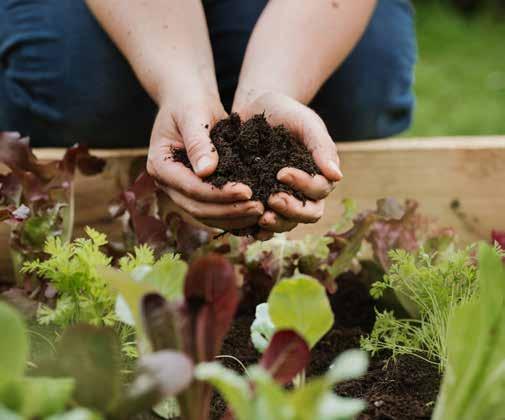
This issue celebrates everything that is spring – from seed sowing to houseplant care, choosing composts to planting advice, projects for children to jobs to do… there really is something for everyone.
So, as we welcome you to our second edition of The Westland Garden, we share your passion and desires, and wish you a season of very happy gardening ahead.
Five jobs to do
Adam Frost: Why I garden
Your garden this season
Michael Perry’s plant trends 13 Dr Westland’s lawn clinic 14 The perfect patio 16 Exclusive interview
18 Caring for roses 22 Houseplant special


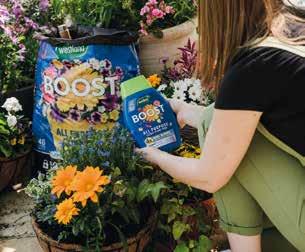
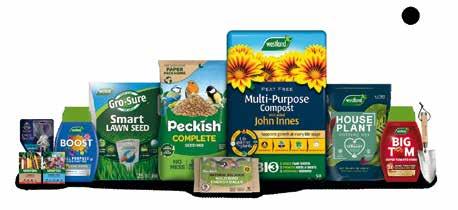
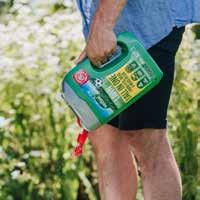
If gardening time is tight in the weeks ahead, try and get these five things done…
1
G et planting: sow seeds of your favourite flowers such as sunflowers, sweet peas and cosmos, and get new trees, shrubs and perennials into the ground now.
2
Ready to chop: spring-flowering shrubs, such as flowering currant (Ribes) and Forsythia, that bloomed in early spring should have their finished flower stems cut to the nearest strong shoot. Using sharp secateurs, such as Kent & Stowe’s All Purpose Eversharp, will ensure a clean cut, helping the
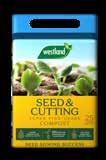
plant to heal quicker and reduce the risk of infection and diseases.
3
T hink veg: prepare a sunny patch for tasty crops. Sow seeds directly, buy-in young plants, or start tender crops such as squash on windowsills.
4
L ove your i ndoor jungle: repot or top-dress houseplants, trim faded growth, and add layer of hydroleca granules to create a microclimate.

5 Feed the birds: wild birds will be nesting and caring for their young now, so keep bird feeders topped up with high energy, nutritious food such as Peckish Complete Seed Mix.
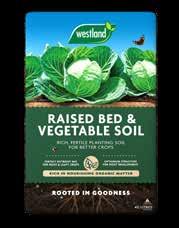


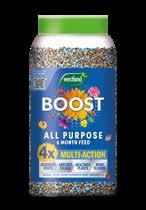

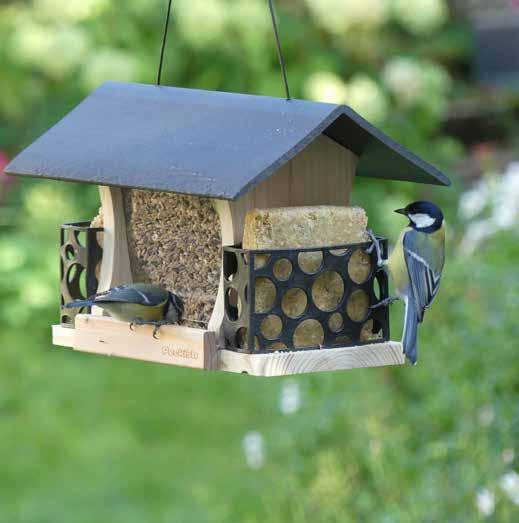
Westland Raised Bed & Vegetable
Soil (1) The perfect foundation for growing vegetables; it is rich in organic matter for strong root development and to give bountiful harvests.
Kent & Stowe Capability Digging
Spade (2) Unmatched in strength with a 130kg breaking strain, this new spade can handle even the toughest gardening tasks thanks to its internal hardened stainless steel pin and new weld pattern.
Westland Boost All Purpose
Multi-Action Granules (3) Give your plants six months’ worth of feed
with these new granules that support the different stages of plant growth for vibrant displays.
Peckish Woodland Feast Feeders (4) Made from 100% recycled materials and sustainably sourced wood, this new range of wild bird feeders looks eye catching in the garden whilst giving new life to waste.
Flopro Cobra Expanding Hose
(5) This new lightweight expanding hose is 20x stronger* than typical fabric expanding hoses, and it will never kink or twist, giving you uninterrupted water flow.
For Westland Horticulture
Publishers: Sara Bazeley & Gina Lewis
Design: Kate Holt
Editorial
Editorial co-ordinator: Chris Young
Writers: Phil Clayton & Marc Rosenberg
Established in 1999, Greenfingers, (the only national charity dedicated to creating well-designed outdoor spaces in children’s hospices across the UK), is planning to create four new gardens for life-limited children, their families and carers in 2025.
Greenfingers Charity is driven by the belief that time spent outdoors, away from the bedside, can offer children and families under considerable stress a vital opportunity to embrace the benefits of being in the fresh air and engaging with the natural environment. Whilst many people may take for granted the simple pleasure of a garden, giving all those who spend time in children’s hospices the chance to spend time together outdoors and away from the bedside is precious.
This year marks significant milestones for the charity. Not only is Greenfingers celebrating its 25th anniversary, but it will also bring to life its 70th garden, a fabulous kitchen garden at Chestnut Tree Hospice in West Sussex. This isn’t the only exciting news. New play gardens at Acorns Children’s Hospice in Walsall and Hope House in Shropshire, will ensure

children of all abilities can enjoy playing outside, close to nature, whatever the weather. The charity will also be creating a remembrance garden at Bluebell Wood Children’s Hospice in Sheffield. This new garden will provide a tranquil and peaceful space for solace and reflection.
With a waiting list of hospices that need their help, Greenfingers Charity can only create magical therapeutic gardens thanks to the generosity of all those who support its work.
To support Greenfingers Charity, Westland is match funding all donations that come via The Westland Garden newspaper. If you’d like to find out more about Greenfingers Charity and donate, scan the QR code: For T&CS, visit Gardenhealth.com/Westland-win


By Hayley Jarvis, Head of Physical Activity at Mind.
Biochar is a highly stable, carbon-rich material with unique benefits for soil and plants. It forms through pyrolysis, a process where wood is heated in an oxygen-deprived environment. Rather than burning, the wood transforms into a porous, honeycombstructured material, capable of retaining water and nutrients.
This structure provides plants with a steady nutrient supply and enhances soil health, creating a sustainable environment for growth. Adding biochar to gardening products brings significant benefits, including improving the soil structure to enhance water retention and aeration, and boosting nutrient retention by preventing leaching, which therefore keeps nutrients available to plants.
The use of biochar also helps to mitigate climate change, as it acts as a long-term carbon store, locking carbon in the soil for more than 100 years. When used in composts, it offsets emissions from production. New for this season, Westland’s John Innes composts have been enriched with biochar, making them carbon neutral.

Get out and about this year for full-on gardening inspiration.
April Harrogate Spring Show 2-4 May BBC Gardeners’ World Spring Fair 8-11 May RHS Malvern Spring Festival 20-24 May RHS Chelsea Flower Show 12-15 June BBC Gardeners’ World Live 1-6 July RHS Hampton Court Palace Garden Festival 16-20
Look after the garden so it looks after you
Spending time in green spaces can boost our mood, improve our physical health, and reduce feelings of stress and anger. It can also help manage some mental health problems, including anxiety and depression.
Mind’s research has found that nearly two thirds of UK adults said that spending time gardening or in nature helps their mental health. The University of Essex carried out research for Mind, which found that 94 percent of people who took part in outdoor exercise activities said that green exercise had benefited their mental health. In fact, ‘ecotherapy’, which involves doing activities outside in nature, can be as effective as antidepressants in treating mild to moderate depression and anxiety.
The colours, sounds and smells outdoors stimulate senses in a different way to being indoors. Finding a relaxing outside space can provide a welcome distraction from any negative or intrusive thoughts. It can also
“Outside space can provide a welcome distraction from any negative or intrusive thoughts”
allow us to switch off from everyday pressures and help relieve stress. Being outside in natural light can also be helpful if you experience seasonal affective disorder.
We don’t all have equal access to green spaces, so if you don’t have a garden try a window box of plants – or explore the community, visiting allotments. There might also be projects that focus on a specific cause like helping the environment or activities like building animal habitats.
We all have different experiences of green spaces, and different reasons for wanting to connect with the outdoors – so spend some time finding what works best for you.
By Chris Young
How long have you been gardening?
Since I can remember, but definitely since I was 3! In terms of a job, as soon as I could leave school at the age of 16.
Would you say gardening is your job and your passion, or do you have other hobbies?
Yes, I love gardening a lot, but I also do other things too. I’ve played a lot of sport in my life, especially football, and I’m now helping coach younger kids. I also love music and cookery. When I cook – and I like to cook a lot – I love trying new things... in fact, I will give anything a go in the kitchen!
What’s the one thing you love about gardening most?
Getting my hands in the soil. It’s really that simple, and that important.
What sort of plants do you love to grow?
All of them! I genuinely have an interest in a diverse range of plants, but what particularly interests me is the layering of plants. Using trees, shrubs, perennials…. plus drifts of bulbs. The more inspiration we take from nature, and look to see how plants grow together, the more we can do in our gardens.
You worked for the great Geoff Hamilton. What was he like?
Geoff was an inspiration. He presented the Gardeners’ World television programme from 1979 until he died in 1996. The programme came from his garden in
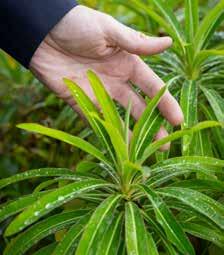
Barnsdale, Rutland, from 1985. I worked with him for many years, helping build his famous sets and different gardens. He was fun; a good bloke to get on with. But looking back, he was way ahead of the times – he was organic and peat free 30 years ago! I feel as if the rest of the world is still catching up with him now.
Best bit of advice when gardening, and who from?
From the one and only Geoff Hamilton: “the answer’s in the soil, boy”.
You’re pretty unique in being able to build gardens as well as design them. Should more people be hands-on like you?
If you can, then yes! Knowing how materials get put together, how they interact, and how they are constructed is really interesting – and, I reckon, makes me a better designer. My old man was a landscaper, and now our son is starting to work in the landscaping world. It’s brilliant to watch him work but also to learn new techniques and experimenting with different materials.
Do you feel gardening is good for your mental health?
Absolutely. Lots of people say it is, and I know it has been over my life. But it really hit home when I designed and built my 2013 RHS Chelsea Flower Show Garden. It was for Homebase but in association with the Alzheimer’s Society. I saw the importance of memory, of watching people

interact; really just having a magical space to be outside. I’m really pleased that things like social prescribing are now happening on the NHS – we all need that connection with nature and plants.
Top tip for someone starting out? Measure it up. Get it on paper. Sounds boring, but it’s got to be done!
You’re a presenter, designer, speaker and author. Which one do you love the most?
Being a designer.
You were very close with your grandparents. What advice would you give any grandparent who wants to enthuse their grandchild?
Sow a seed – any seed into a pot, or a potato in the ground. Do anything that shows a youngster the power of germination. And grow something they will eat – it will make incredible memories for them.
Where: Lincolnshire
Size of garden: front: 30m x 12m; back: 35m x 30m
Aspect: north facing but gets a lot of light
Soil: improved garden loam
Adam’s interesting plants:
• Trees: Cornus mas “reliable and hard working”
• Shrubs: Rosa spinosissima ‘Dunwich Rose’ “the early white flowers are a joy”
• Perennials: Epimedium ‘Spine Tingler’ “very long, dark leaves are great”
• Adam’s new book, For the Love of Plants, is published by DK (March). Available from many garden centres, book shops, and online.
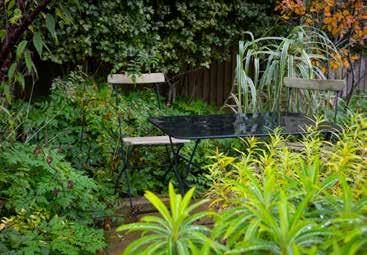
• Bulbs: Camassia leichtlinii ‘Sacajawea’ “variegated leaves, brilliant spring flowers”
• Fern: Polystichum polyblepharum “elegant, evergreen, enduring”
• In April, September and October, Adam will be on tour, talking all things plants, gardens and memories. Book tickets: fane.co.uk/ adam-frost Go
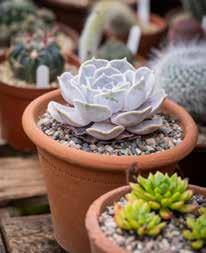
Lincolnshire garden.
Spending time in the garden now will really help to make sure it’s ready for the season ahead

There are lots of things you can be getting on with at this time of year: cut old stems of perennials; pull up weeds; add a mulch below shrubs and over borders; compost any debris from last year (such as fallen leaves); tie in climbers; and edge your lawns.
You can sow tomato seeds through to the end of April. Prick out seedlings and pot singly, or buy plants from garden centres. Keep young plants protected from the cold; they grow quickly and need potting-on several times. Wait until after the last frost to plant out. Start feeding as the first flowers form with Westland Big Tom Super Tomato Food – a nutrientrich liquid feed that will help to produce three times more*, bigger and tastier tomatoes.

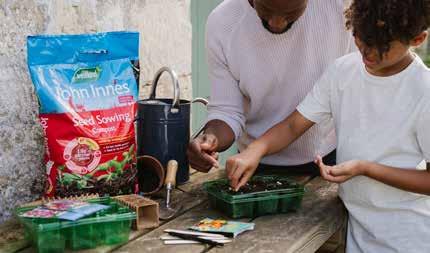
Spring is the perfect time to get sowing seeds for flowers and tasty crops this summer. Sow plants that need extra warmth to germinate in trays or small pots on windowsills (or in greenhouses), but if you don’t have space, hardier plants can now be sown directly outdoors where they are intended to flower or crop.
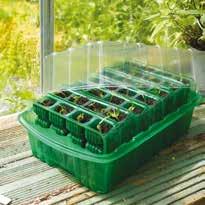
Peak dahlia season may be some way off yet, but it’s now time to get them into growth. Pot the tubers up, water and keep warm and bright; a cool windowsill will do. Shoots soon appear –you can in fact take cuttings from these to make more plants. Both parent and young plants can be planted out after the frosts.
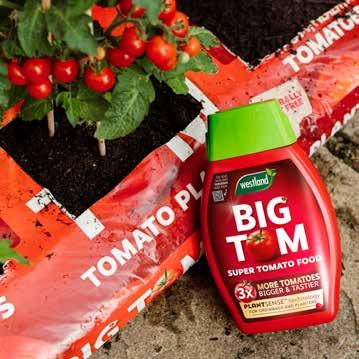
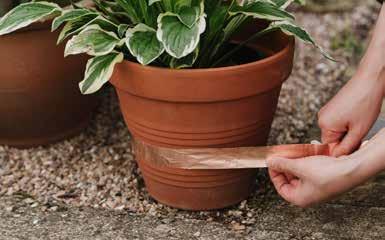
April showers might bring May flowers, but they also bring pests in their droves. Protect your most susceptible plants using a range of tactics; try a barrier of copper tape, or set slug traps. If slugs continue to win the battle, try the rainproof ferric phosphate-based Growing Success Slug Killer Advanced which is suitable for organic gardening.
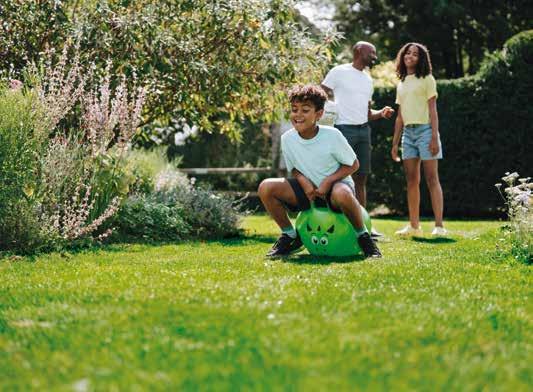
Lawns put up with a lot through winter, especially in a cold or wet season, so in spring it’s worth giving them some TLC. Aerate your lawn with a border fork or aerator to relieve compaction, repair and re-seed damaged patches, and apply a feed such as Westland SafeLawn to boost growth.


The secret to impressive herbaceous borders is to provide support to prevent stems bending and snapping – or clumps opening out as plants develop. Aim to get your supports in place as early as you can in spring, when shoots are small and stakes and grids can easily be added.
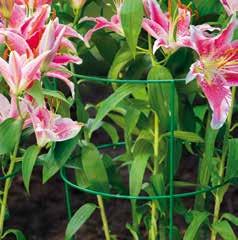
Summer wouldn’t be the same without hanging baskets; for great displays, plant now and grow-on in a greenhouse. To reduce summer watering, add a deep plastic saucer to the bottom of the basket to act as a reservoir before filling with Westland Boost All Purpose Compost. Adding Westland Boost All Purpose Multi-Action Granules then gives your plants the best start, with six months’ worth of feed for stronger roots and greener foliage.
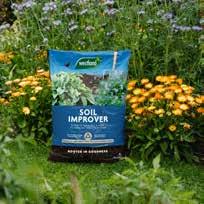
It’s not too late to divide some perennial plants (such as hostas, lily of the valley or sedums) – a job that will keep them vigorous and free-flowering. Lift clumps carefully from the ground, and using a Kent & Stowe Perennial Spade, split into fist-sized chunks, replanting back into improved soil. Water and mulch plants with Westland Soil Improver. Any spare plants can be gifted to friends!
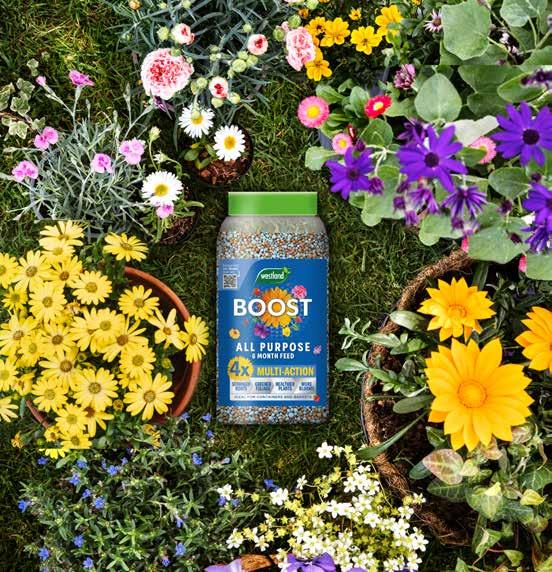
Annuals are flowers that typically only last one growing season and won’t survive the cold, winter months, but they will give you a profusion of summer colour. Marigold (Calendula), love in a mist (Nigella), poppies (Papaver and Eschscholzia), cornflowers (Centaurea), clary (Salvia viridis) and sunflowers (Helianthus) can all be direct-sown outdoors in the coming weeks.
Starting flowers and veg from seed under cover in spring will get your gardening year off to a flying start. Follow our tips and sow like a pro!
Growing from seed is one of the most rewarding hobbies on the planet. By coaxing seeds into life indoors, or in the warmth of a heated greenhouse, you can give plants a head start and look forward to earlier displays of flowers and harvests.
Sowing under cover results in better germination, too. Young plants have time to develop without taking a battering from inclement weather, or being munched by slugs and snails!
Cleaning pots and seed trays before use will reduce the risk of disease outbreaks. Wash in warm water with a general-purpose disinfectant, rinse thoroughly and allow to dry. Grubby propagator lids should be given a scrub before use, to maximise light transmission.
Use a fine-grade seed compost for seed sowing, because it has the best texture for seed germination and has the right level of nutrients for even delicate seedlings to grow.
Take care to read the instructions on seed packets before sowing. Take particular note of the sowing depth, as some seeds will need to be buried whilst others germinate on the surface of the compost. Instead of sowing an entire pack of seeds in one go, sow small batches over a couple of months - this is known as succession planting. You’ll enjoy flowers and veg over a longer season. Sowing seed thinly provides space and air flow which is vital for healthy seedling development. And don’t forget: buy plant labels and a pencil or waterproof pen, to label multiple pots and trays. It’s easy to forget what you’ve sown!


A greenhouse extends the gardening season, offering maximum light for seeds and seedlings. If you’re sowing tender plants in a greenhouse you’ll need to heat it with an electric or paraffin heater. A thermostatically-controlled electric propagator can also maintain precise temperatures inside.
In small courtyard, patio and balcony gardens, a grow house opens up a world of opportunities. The Gro-Sure® Visiroot 12 Tray Growhouse has a unique shape for easy access and plenty of space for up to 12 seed trays. Growhouses will not, however, shield tender plants from frost. On mild days roll the cover up to allow air to circulate.
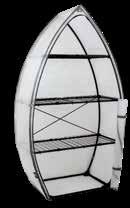
Many gardeners sow seeds in their homes. Placing propagators in bright rooms at temperatures of around 18-20˚C is ideal. Treat windowsills with caution because temperatures fall at night and seedlings risk becoming leggy as they lean towards the light in the day. Try a Gro-Sure® Electric Heated Propagation Mat to boost the ambient temperature for your seed trays to improve germination.
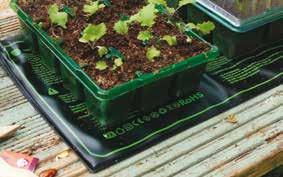

1 Seed trays
Transparent, durable Gro-Sure ® Visiroot Seed Trays make it easy to check on root growth and moisture content without disrupting seedlings. Multi-level drainage helps to avoid overwatering.
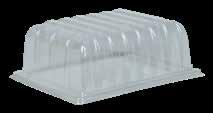
2 Propagator
A propagator – a seed tray with a clear lid on the top – provides a perfect balance of warmth, moisture-retention and humidity that seeds need when they are bursting into life. Try a Gro-Sure® Visiroot Twin Propagator Set for an all-in-one kit
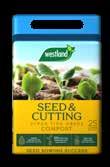
3 Seed compost Westland Seed & Cutting
Compost is a fine grade mix that enhances the germination process by up to 25%. Its texture ensures closer contact between seed and soil, maximising moisture retention and delivering essential nutrients right where they’re needed.

4 Vermiculite
This naturally occurring lightweight mineral works its magic to boost germination. A thin layer of Gro-Sure® Vermiculite spread over the surface of compost can help to keep certain seeds snug, coaxing them into life, while insulating against cold and draughts.

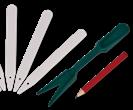
5 Plant labels
It’s easy to forget what you have planted and when. Add the date at the same time as the name so you know when seeds were sown. Use Gardman Plant Labels rather than the seed packet so it doesn’t disintegrate when you water your seedlings!
Now is the perfect time to sow seeds under cover – which just means in a greenhouse, growhouse or indoors. We’ve picked our top three flowers and top three vegetables for you to start sowing this month…

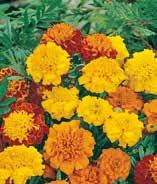
1. Marigolds (Tagetes): whether compact French marigolds for a riot of colour or African marigolds for enormous blooms, these summertime favourites are a cinch to grow.


2. Cosmos: adored by bees and butterflies, feathery foliage forms a backdrop for a profusion of jewel-like blooms, borne from midsummer until the first frosts.


3. Zinnia: available in a range of fiery shades, zinnias turn up the summertime heat in beds, pots and borders. These sun-lovers look picture perfect when cut for a vase.

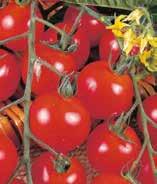
4. Tomatoes: packed with vitamins, the nation’s favourite edible is child’s play to grow. Choose from sweet, cherry-size fruits, flavoursome classics or huge beefsteak varieties.


5. Runner beans: a fantastic source of vitamin C and fibre, the large, kidneyshaped seeds are ideal for sowing individually into pots indoors in April and May. They have great flowers too!


6. Cucumbers: a greenhouse essential, you’ll be rewarded with earlier crops by sowing seed under cover now. Fill seed trays with compost and sow seeds individually, on their edges.
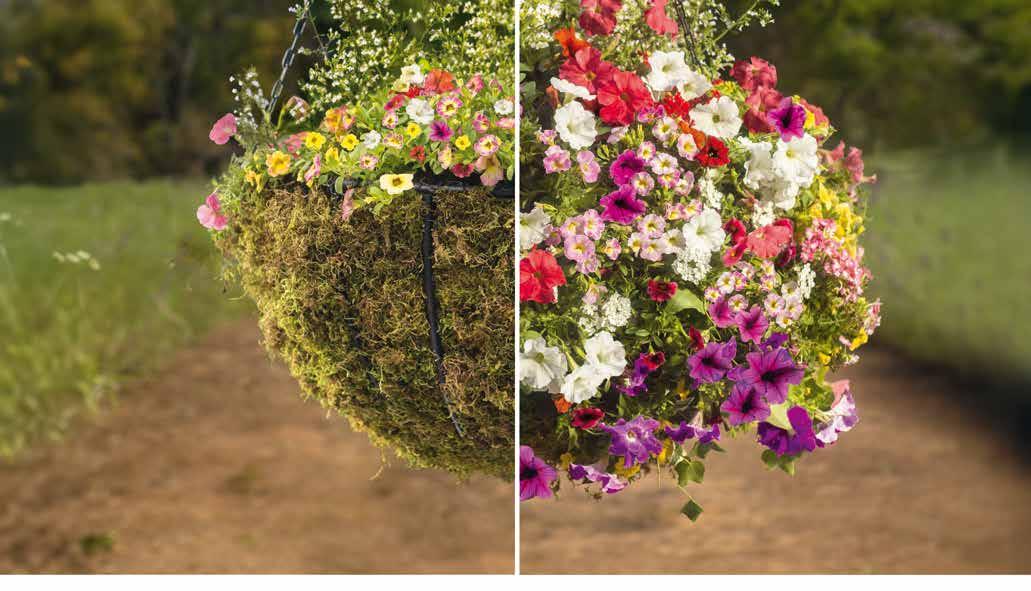
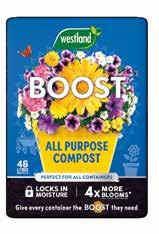




Michael Perry, aka Mr Plant Geek, gives his take on this year’s must-have plants
s we get going into a new gardening season, it’s time to prepare for a new wave of trends with one colour leading the charge – Future Dusk. It is a deep, moody hue that resides somewhere between blue and purple.
In the garden, Future Dusk’s influence will be felt in a range of plants that share its enigmatic and mysterious tones. I’ve chosen 10 plants
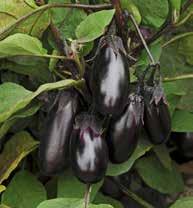
Aubergine ‘Patio Baby’
This compact variety produces clusters of purple-black fruits that look as good on the patio as they taste in the kitchen. Each plant yields up to 50 fruits with a rich, mild flavour. No staking is required, and the thornless leaves make harvesting a breeze. Love those dark, glossy fruits!
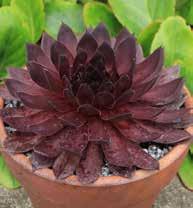
Sempervivum SuperSemps Series ‘Onyx’
With rosettes up to 20cm across, this plant resembles a giant cut jewel. In summer, it produces starry pink flowers on thick stalks, adding a surprising burst of colour. Drought-tolerant and easy to care for, it’s ideal for containers or rock gardens.
that take on the spirit of this colour palette, which come with the added bonus of having good availability in garden centres.
These statement plants are a far cry from last year’s light and airy Peach Fuzz, so they’re perfect for the discerning gardener looking to stay ahead of the curve.
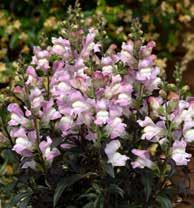
Antirrhinum ‘Snap in Black Pink’ Snapdragons have always been an easy-care garden favourite. Its foliage emerges almost black, gradually lightening to a deep green, while its baby-pink flowers provide a staggering contrast. This perennial is a sun-lover, thriving in well-drained soil and offering a long-lasting display of colour.
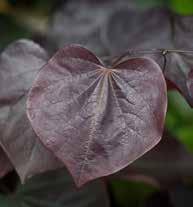
Cercis canadensis ‘Ace of Spades’
This deciduous tree is as bold as its name suggests. It offers striking, dark purple, almost black foliage in heart-shaped leaves, with clusters of rosypink flowers appearing in spring before the leaves emerge. Growing up to 4m in height and spread, it’s a knockout.


Hebe ‘Dark Angel’ Compact, evergreen and striking. The leaves, edged in red, darken to a moody green in winter, while its lilac-pink flowers appear from spring to early summer. Growing 60cm x 40cm, it’s perfect for smaller spaces or as a feature in a mixed border.
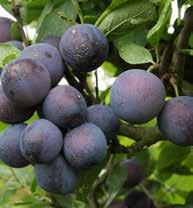
Damson ‘Farleigh’
A nod to the past with an eye on the future, this damson is a compact, heavy-fruiting tree that has been around since 1820. Its dusky blue fruits are almost black. While the fruits are not sweet enough to eat raw, they are ideal for making jams, pies and even wines in abundance.
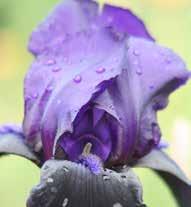
Iris ‘Deep Black’
For those who love drama, ‘Deep Black’ is the darkest of the dark. This tall bearded iris boasts falls (the lower flower petals) that are almost black, with a subtle blue-purple beard and standards. Flowering from late spring to early summer, it reaches a height of 90cm.
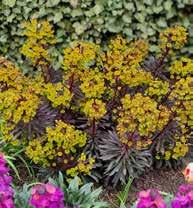
Euphorbia ‘Miner’s Merlot’
This perennial offers yearround interest with its rich, dark purple leaves and stunning flowers. Hardy and droughttolerant, it’s perfect for borders, containers, or even as a cut flower accompaniment (just make sure to don gloves when harvesting).
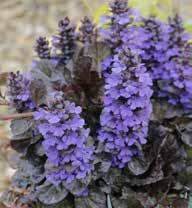
Ajuga reptans ‘Black Scallop’ Ground cover never looked so chic. This plant offers dark, almost black foliage that sets the stage for spikes of deep blue flowers from spring to midsummer. It thrives in shade. This hardy evergreen is not only low maintenance, but also provides a rich, dark backdrop.
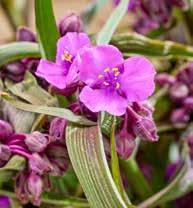
Tradescantia ‘JS Brainstorm’
This really lives up to its name! Its vivid purple petals, contrasted by yellow anthers, will certainly grab your attention. It boasts an exceptional flowering season (two months longer than other varieties) and that intense colour is complemented by evergreen leaves with purple tints.
The most up-to-date guide helping you find the perfect compost, whatever you’re growing
Choose the right compost and your flowers, veg, fruit, shrubs, roses and trees will enjoy the best start in life. Modern, peat free composts can look, feel and smell different to the peat composts many people grew up with, but all offer superb performance.
The latest composts harness the power of eco-friendly ingredients and can contain a mix of wood fibre, loam, sand and grit – all expertly blended for brilliant results. It’s more important than ever to feed when using peat free composts, and they will appreciate more frequent watering (due to their open, porous structure) but prefer little and often rather than being drenched; simply press your finger into the compost to see if it’s still moist below the surface.

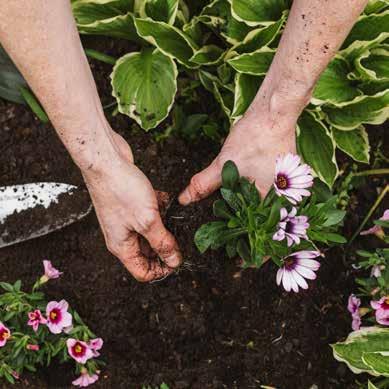
Rose compost
We all love roses, so give them the best start with great compost. Westland Rose Planting & Potting Mix strengthens plants from the inside out, building healthiness and their resilience against pests and diseases.
Containing six months’ slowrelease feed, you’ll enjoy exquisite flowers and sublime perfume. The compost includes sulphur which works wonders for reducing outbreaks of blackspot.
Tree and shrub compost
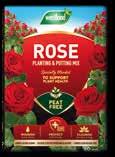
Seed and cutting compost
A quality seed and cutting compost creates perfect growing conditions for successful seed germination and rooting of cuttings. A super fine-grade formulation, such as Westland Seed & Cutting Compost, contains vermiculite to improve drainage and aeration.
Container compost
A fantastic all-rounder for pots, containers and hanging baskets. Westland Boost All Purpose Compost is peat free and enriched with starter feed for brilliant displays. Packed with water-storing granules, this compost is a master of retaining moisture, keeping plants’ thirst quenched.
Soil-based John Innes composts have been around since the 1930s and were developed to meet plants’ needs at different stages of their life. Here’s how to choose the right John Innes compost.
John Innes No.1
This young plant compost is the go-to choice for potting up seedlings and plug plants, and for growing-on rooted cuttings. It’s a relatively fine, peat free blend, feeding for a month. Striking the

perfect balance of moisture-retention and drainage, the formula stimulates healthy growth and root development, giving young plants the best start in life.
John Innes No.2
With a higher level of nutrients, peat free John Innes No.2 compost is the one to choose for potting-on plants as they develop. Formulated to encourage stronger roots and boost shoot growth, it contains loam to help lock in

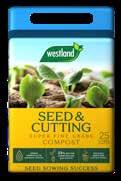
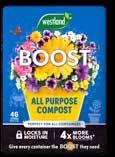
Trees and shrubs spend many years in containers, so they need a highperformance compost to keep them healthy throughout the seasons. Westland Tree & Shrub Planting & Potting Mix reduces stress from transplanting and feeds for six months. It’s blended to promote root and shoot growth for stronger, healthier, more resilient plants.
Multi-purpose compost
Whether you’re pricking out seedlings or filling summer containers, multi-purpose compost will nurture plants through all stages of life.
A quality blend, such as Westland Multi-Purpose Compost with added John Innes, provides the perfect balance of nutrients, moisture retention and drainage.
moisture, as well as sand and grit which provide excellent drainage.
John Innes No.3
Mature plants such as shrubs, trees and fruit bushes (that are destined to spend their life in containers) should be treated to peat free John Innes No.3 compost. It’s the richest of all John Innes formulations, feeding for four months. High in loam to retain moisture and

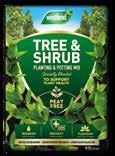
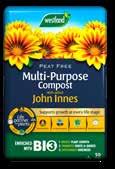
nutrients, it features sand and grit for effective drainage, sustaining plants for a long life.
Westland John Innes 1, 2 and 3 28L composts are now enriched with Carbon Gold biochar, which means they’re carbon neutral. Biochar improves aeration and water management, and also helps to hold and release nutrients for when plants need it. Biochar naturally improves the health of the soil as well as capturing carbon so every gardener can do their part for the planet.
Abeautiful, healthy lawn starts with a box of grass seed – but not all grass seed is created equal. While a quality product is the result of a careful blending of grass species, many cheaper options include annual grass varieties, which can ruin your lawn. Not only do these waste your money on the lawn seed itself, but also waste the time you spend sowing the lawn. We all want a beautiful lawn, and this starts with a high-quality lawn seed mix!
What makes grasses different?
Lawn seed mixes can contain a number of different varieties of grass seed. High-quality mixes, like those from Westland, use only perennial species that will continue to grow year after year such as Lolium perenne (perennial rye grass) and Festuca rubra (creeping red fescue) as well as varieties specifically bred for lawns, providing fine texture, vibrant green colour, and a lawn that survives for years. Creeping red fescue creates a dense lawn by spreading sideways as it grows. Perennial rye grass


has a fast germination time, is very tolerant to our climate, and has attractive fine blades.
Annual varieties found in cheaper mixes are intended for cattle feed, so won’t create a beautiful lawn. These grasses germinate quickly but have a coarse, pale, unattractive look, and die off after a single season, leaving bare patches and weeds in their wake. Instead of creating a lush, long-lasting lawn, you’re left with an unsightly mess that requires constant reseeding and maintenance.
Proving the benefits
Recent trials run at the National Institute of Agricultural Botany in Cambridge highlight the differences between lawn seeds and problems faced when using cheaper mixes. In side-by-side tests, Westland’s Smart Seed (image 1) grew a lush, resilient lawn, while a competitor’s mix (image 2) with annual varieties largely died back within a year, leaving behind bare earth and weeds. The coarse, brittle stems of the annual varieties found in the competitor mix formed a spikey matt after mowing that was painful to walk on. Westland Smart Seed, on the other hand, had fine blades that mow well and continued to grow the following year, highlighting why the investment in quality lawn seed is so worthwhile.

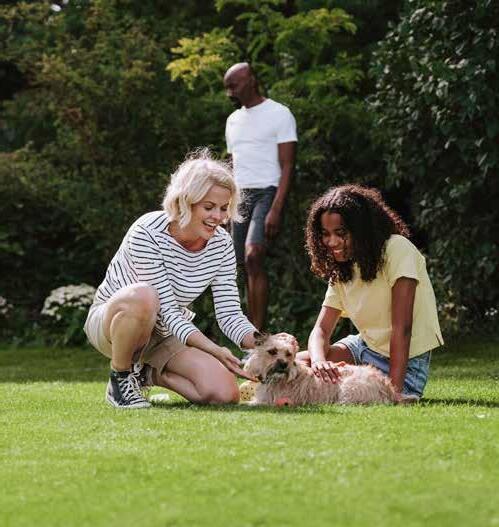
The Smart Seed difference: The Aqua Gel seed coating absorbs 400x its weight in water and releases it back when needed, plus this makes the seeds heavier so they don’t blow away when applying. A biostimulant and micronutrient based treatment speeds up early establishment, a microbial seed dressing helps stimulate strong healthy root growth and convert nitrogen from the air into feed and a green treatment deters birds, so the seed isn’t eaten before it has a chance to grow.
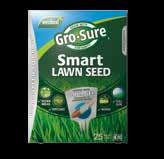
BEST FOR general use
Westland Gro-Sure ® Smart Lawn Seed
Westland Smart Seed has improved water retention, germination and healthy root growth, ideal for creating the perfect strong and green lawn.
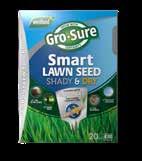
BEST FOR shady areas
Westland Gro-Sure ® Smart Lawn Seed Shady & Dry
Perfect for sowing under large trees or bushes. It has added mycorrhizal fungi that promotes growth of the root system to maximise water and nutrient uptake.


BEST FOR early sowing
Westland Gro-Sure ® Smart Lawn Seed Fast Start
Overseed your lawn in temperatures as low as 7˚C with this lawn seed so you can use it to sow or overseed a lawn earlier than other seed mixes.
1. Choose the right time of year. Most lawn seed needs the soil temperature to be above 10˚C in order to germinate, so April and September-October are often the best times.
2. Buy a grass seed mix that uses only perennial grass varieties designed for lawns, such as Westland Smart Seed.
3. Clear the area of any weeds or stones, dig over the surface to break down any lumps.
4. Add a layer of Westland Lawn Seeding Soil to give the lawn seed the best conditions for germination.
5. Sow your lawn seed according to the packet instructions, using a spreader for larger areas.
6. Press the seed into the soil by walking over the entire area.
7. Water gently with a fine rose or sprinkler and if no rain is forecast, continue to water daily until established. Steps to
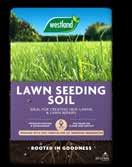
Don’t worry if your lawn’s in a sorry state. It’s easy to breathe new life into tired turf
Everyone loves a lush, green lawn. As the weather warms up and grass begins to grow, it’s time to spring into action and give your lawn some attention. Before you grab the mower, use a lawn rake to remove twigs, stones and windblown debris that might damage the blades. Choose a mild, dry day to give your lawn its first trim. Raise the height of your lawnmower’s blades for the first few cuts, gradually lowering them as the season progresses. A freshly cut lawn transforms the look of a garden, but if unruly grass is spilling into borders, redefine edges using a Kent & Stowe Edging Iron. Simply press down on the tread plate to create neat and consistent edges.
Give lawns a makeover
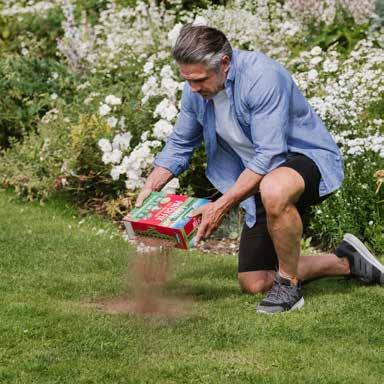
bare patches
Patchy grass is common on lawns that bear the brunt of heavy wear and tear. Spring is perfect for tackling these unsightly areas, along with dead patches caused by pets. Try Westland Patch Fix, which works a treat where lawns have suffered in shady areas, too. Cut out the damaged area with an edging iron and lightly fork it over, removing dead grass and weeds. Scatter the seed over the patch; water using a fine spray; and keep the area moist. Fresh grass will burst into life within a couple of weeks.

Revitalise tired grass
After the ravages of winter, feeding can transform tired lawns, giving grass a green, healthy appearance. An organic, child and pet-friendly feed, such as Westland SafeLawn, is ideal for gardeners who prefer not to use chemicals and it can be applied monthly until October.
SafeLawn revitalises grass, using slow-release feed to encourage dense growth that crowds out weeds. Its clever, natural ingredients transform dead moss into nutrients, too.

Give moss the boot the natural way
Once lawns have had their first cut of the season, moss rears its ugly head, spoiling the appearance of freshly mown grass. Moss thrives in damp, waterlogged conditions and is common after a wet winter. Outbreaks are likely to be found on poorly drained, acidic soil but it’s an easy problem to treat without chemicals.

A traditional all-in-one lawn feed, weed and moss killer works a treat to get your lawn looking strong and healthy all year round. Westland Aftercut All In One Lawn Feed, Weed and Moss Killer is quick off the mark, banishing invasive lawn weeds, wiping out moss, strengthening a lawn’s roots with its perfect blend of nitrogen, and greening up grass in just seven days. Once moss has turned black, it can be removed by lightly scarifying using Kent & Stowe’s Stainless Steel Scarifying Rake.
Green up your grass
Whether you’re keen to breathe new life into your lawn or give it a makeover in time for a barbeque, a rapid action feed and conditioner will work its magic. Try Westland Ultra Green which greens up grass in just three days but won’t encourage lawns to put on a growth spurt, so you can enjoy a luxurious lawn with less time spent mowing. By nurturing a strong, healthy sward, lawns will be more resilient, coping better with stress.

A child and pet-friendly moss treatment such as Westland Moss Master impacts moss naturally, leaving no black patches. This modern lawn marvel harnesses the power of friendly bacteria which digest moss and transform it into feed, eliminating the need to rake dead moss from grass. Packed with slow-release nutrients, it greens lawns in seven days and carries on feeding for three months.


a greener, thicker, healthier, weed & moss free lawn; choose Westland.



From cleaning away the winter grime, to potting up beautiful containers, with a few simple tasks you can create an impressive and relaxing patio space ready for summer entertaining
Apatio often marks the transition between house and garden; a space that can be inviting, comfortable and filled with colour and scent all summer long. Whether it’s for barbecuing or growing your prized plants, relaxing on a lounger or splashing around in the paddling pool, a patio can be anything you want it to be. But before you dust down your garden furniture, it’s worth taking time to spruce-up your patio. Resolva Xtra Clean Ready To Use Patio Power Clean keeps patios and decking clear of algae and black spots all season. And while you’re in the cleaning mood, you can even use our outdoor cleaner on children’s toys or terracotta pots to make sure everything is spotless for the season ahead! Every few weeks, it’s also worth moving pots aside and sweeping through using a stiff outdoor broom – this controls pests and keeps the patio crisp and clean.

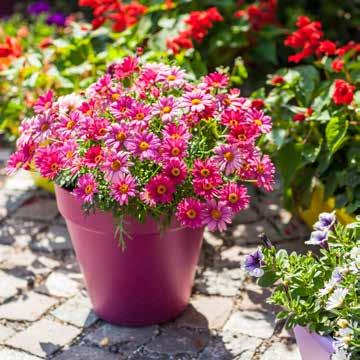

The vivid, tubular blooms are a magnet for pollinators all season long; a perfect summer plant.
Muehlenbeckia Coins

Keep on top of weeds with Resolva Path & Drive Ready to Use, which is perfect for eliminating deep-rooted weeds on patios and paths. Create drama by grouping containers together: make the most of sunny corners with exotic succulents and pelargoniums. Alternatively, group ferns and begonias in the shade. Flower pot saucers below the pots reduce the need for watering and reduce any messy runoff.
And don’t forget the all-important evenings: plant for fragrance with lilies and nicotiana, and add solar lighting so you can enjoy those balmy summer nights. With this in mind, your patio will be perfect… whatever you do on yours!
1 The first step is to choose the pot that’s perfect for your patio
The right container: work out which plants you want to grow and where you want the pot to be; consider the plant’s current size and future growth; and ensure there’s plenty of room for roots to develop.

Select appropriate materials: there are a wide range of options such as terracotta, plastic, wood, metal, or fabric. Consider the weight, durability and overall look of the pot too. Terracotta pots are great for plants as the porous material allows water to evaporate. Ensure good drainage: if you have a non-porous pot (like metal or plastic), drill holes in the base if necessary. Help drainage by adding a layer of vermiculite at the bottom.
2 Once you’ve got your ideal pot, it’s now time for the plants
Prepare the potting mix: use a highquality, well-draining potting compost, such as Westland Boost All Purpose Compost, which has been blended to support the
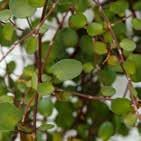

The miniature appearance exudes an exotic allure that is captivating and enchanting.
Pelargonium Calliope Dark Red and Calliope White Intense flowers all season long that add bold colour to any container around the garden.
health of container plants by locking in moisture. Add a six month controlledrelease feed such as Westland Boost All Purpose Multi-Action Granules to the compost.
Plant carefully: gently remove the plant from its container; loosen the root ball (if needed); place in the new container at the appropriate depth; firm in. Water thoroughly: saturate the soil after planting, but allow the excess water to drain away completely.
3 To get the most from your container, keep an eye on it
Maintain regularly: water as needed, based on the plant types and where the pot is kept. Feeding is often essential for many plants, so use Westland Boost All

Purpose Plant Feed to help you achieve stunning blooms; deadhead flowers and remove dying leaves. If there’s extreme weather, protect as needed. Look out for problems: inspect plants for any signs of pests or diseases and address accordingly. Try Westland Bug Guard to control pests and boost plant health.
Don’t let grubby patios, slimy decking, and grimy looking toys get in the way of enjoying your garden this season
Winter can wreak havoc on our garden’s furniture, patios, and decking, but there’s a quick and easy solution to restore your garden to its former glory, thanks to Resolva. It will do the hard work for you without the time-consuming hassle of scrubbing or power washing. It works by breaking the bond between the mould and the surface, killing the organism, so it can be washed away, even by rainwater.
Patios and paving areas are put through their paces season after season – entertaining friends, the to-ing and fro-ing of cars, and decorated with pots and containers, so it’s no wonder they need some TLC to get them in perfect condition for the season ahead. The Resolva Xtra Clean Ready To Use Patio Power Clean removes green algae, black spots and mould, and prevents them from coming back for up to nine months. All you need to do is spray the surface area and leave it to work, and you’ll see results within one week.
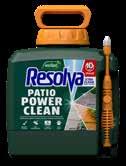
When the sun finally makes an appearance many of us rush to uncover the garden furniture and there’s nothing more irritating than being greeted with a lounger covered in algae and black spots. Banish the damage of winter with the Resolva Xtra Clean Ready To Use Outdoor Power spray. Remove any soft furnishings and give your chairs, loungers and tables a spray with the formula and leave it to do its job. Come rain or






shine, the formula will get to work and even kill bacteria on the surfaces too.
Terracotta pots are a staple in many gardens, bursting with colourful flowers all summer long, but during winter when they’re exposed to the elements, algae and black spots can take hold. A simple spray with Resolva Xtra Clean Ready To Use Outdoor Power Clean will have your terracotta pots back to their best and ready to brighten up your garden in just a week.
There’s simply never enough space to neatly store away outdoor toys during the winter, and when spring comes, plastic toys from slides to swings can be covered in green algae. Get them ready for hours of fun in the sun with the convenient Resolva Xtra Clean Ready To Use Outdoor Power spray. Spray the formula on any unsightly areas and within a week the algae and black spots will be gone.

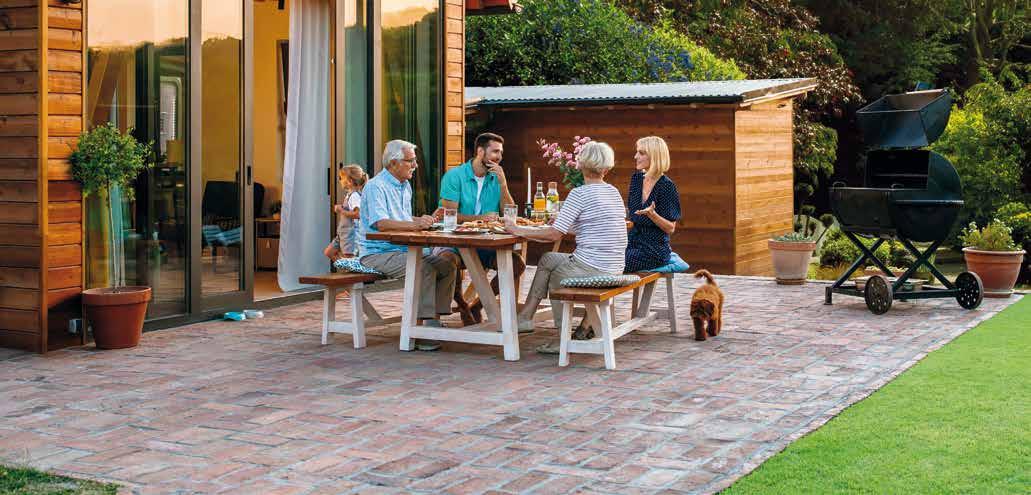
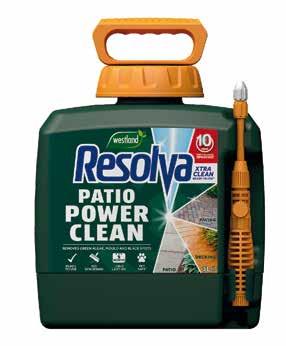

Tom Allen is not only well known for presenting television programmes, he’s increasingly loved by those who follow his many stories online. But what sort of home gardener actually is he? Chris Young went along to find out
There are some people who just have a knack of making other people smile. Whether it’s their accent, what they say, or how they say it, they are just naturally funny people. But often, in our polarised and rather confusing world, social media isn’t a place to find such humour, fun or friendship.
But for Tom Allen, that’s exactly what he’s experienced since he started sharing more of his gardening life on Instagram a few years ago. As you’d expect for someone as quick-witted as him, he makes almost all gardening subjects a matter of fun.
“It was my partner Alfie who encouraged me to share more gardening videos on Instagram,” explains Tom. “And it’s gone really well. By sharing my failures and successes, I hope people can see I’m being honest… and sometimes rather naïve!”
One of the most recent horticultural exploits that didn’t turn out as Tom had wanted was by putting a beautiful bird of paradise plant (Strelitzia) in the shed for winter…. without any light or water. As Tom soon found out, it didn’t turn out too well for the plant…
But this is very much the spirit of Tom Allen. Incredibly likeable, honest, easy going and great fun, he is very much as you see him on screen. Whether it’s his acerbic wit on The Apprentice: You’re Fired or Bake Off: An Extra Slice, or his work on panel shows such as 8 Out of 10 Cats or Would I Lie to You?, he’s a busy man. Plus his radio work, whether for BBC Radio 4 or his Sunday afternoon show for Virgin Radio – as well as what he shares on social media or gets paid to do for advertising.
So what has all this frenetic media activity got to do with gardens I ask him? “I love gardening,” he replies. “Alfie said to me once, ‘Everything’s alright with you when you’re in the garden’, and I realised that he was absolutely right.” Living in a recently updated, beautiful, double-bay-windowed 19th century townhouse in Bromley, southeast London, the garden is about 20m long and 7m wide. Which means it’s plenty big enough for a lawn, veg bed, ornamental border, two seating areas, a water feature and plenty of planting interest.
“I only moved into the house in 2021 – I’d been living with my parents until then,” Tom says. “So having this garden was a huge bonus – it has brought me a lot of joy. I love adding architectural interest to it, whether
From a memorial veg patch for his dad, to careful ways to support wildlife, Tom’s garden is a true reflection of his emerging gardening passion.
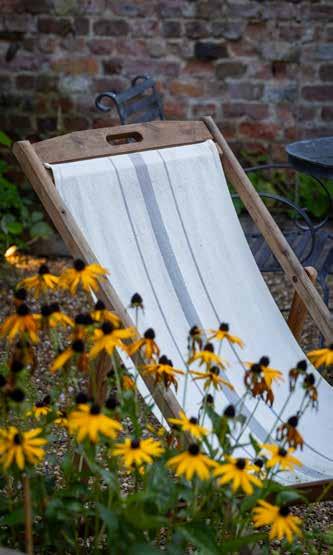
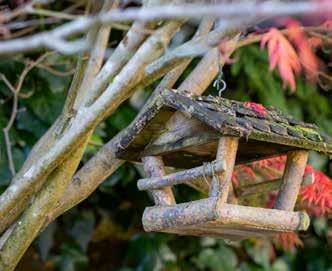

“Alfie said to me: ‘Everything’s alright with you when you’re in the garden’. He was right.”
the outdoor furniture, the arch with the jasmine growing over it, or just a collection of pots.” A friend helps in the garden, especially when Tom’s away filming.
For the love of veg
It is perhaps the growing of vegetables that is the most important to Tom – and for good reason. Having grown up in Bromley, not far from where he lives now, his parents always encouraged him to be outside. “Dad loved growing his veg, while Mum enjoyed sitting in the garden,” he reminisces. “They’d often ask me to be outside, topping up the bird bath or playing with my toys. Dad was definitely of the generation where you grew your own produce and took pride in doing so.”
Sadly his father passed away four years ago, but Tom is honest about the veggies he grows now and that they are a direct link back to his father. He calls it an active form of grief. “Having lived with my parents until I was 38, Dad was proud to know that I was buying a house with a garden,” he says.
It’s now Tom’s turn to continue the veg-growing tradition and as you’d expect, he layers on the selfdeprecation as well as evident honesty. From cabbages to lettuces, beetroot to runner beans, strawberries to chard, there’s a huge amount of growing in just a few square
metres of his raised bed. “I love growing vegetables and fruit as it really makes me think about climate change, about agriculture, and the whole idea of how food gets put on our table,” he explains. “But when I think about growing tomatoes… what a roller coaster that is! Last year I sowed the seed; grew them on a windowsill; then they got too leggy; then I moved them outside; then they got nice and bushy… they seemed happy… but then the leaves dropped off leaving me with hardly any tomatoes!” He laughs as he says it, but haven’t we all had a similar level of gardening frustration?
Even though Tom is known for presenting television rather than gardening, he is loving making connections across the industry: “I first went to RHS Chelsea Flower Show in 2021 and since then the gardening world has been so welcoming, so happy. People seem really genuine and just want to pass their knowledge and passion on.” And in Tom’s inimitable way, he’s doing exactly that through Instagram. With hundreds of thousands of followers, he gets huge engagement when he shows the trials and tribulations that we – as gardeners – all experience.
There’s no doubt that Tom is a showman (his drama background testifies to that), but he is not born of privilege or patronage – his Dad was a coach driver. But he has a great turn of phrase and doesn’t take himself
If you were a plant, which one would you be? Wisteria Favourite flower colour? Red Flowers or veg? Veg
What’s your dream garden? Cottage garden with a lot of vegetables
What’s the one tool you wouldn’t be without? Secateurs
First plant you remember growing? Cress (and I’ve hated it ever since)
Houseplants: foliage or flowers? Foliage
Drink of choice when you’re at the garden centre? A nice fruit juice
Happiest memory of being in a garden? Being with my family when I was younger
You enjoy doing podcasts – what do you like to listen to when you’re gardening? Ones that transport you to other gardens… like the RHS podcast

too seriously. Yet underneath all that, there’s a humble beginner gardener who needs to garden because he knows he’s happier when he’s doing so. He wants to grow more, buy more, learn more, and yes, ultimately, grow better tomatoes this year. And as any gardener knows, that’s definitely not a laughing matter…
• Tom is an Ambassador of St Christopher’s Hospice in southeast London, which is widely recognised as the first modern hospice. It’s a world-class palliative care unit, relying on donations for much of its work: stchristophers.org.uk
Follow Tom on Instagram: @tomindeed
Scan the QR code to watch a tour of Tom in his garden.
The cold weather will soon be behind us; days are longer; and the soil is warming nicely. Spring signals the start of an exciting new gardening year
To keep your garden in peak condition through summer, there are a few tasks worth seeing to. Planting up plants into your borders now will help make sure they establish well before summer. Mulch borders to lock in soil moisture and reduce the need for watering, concentrating on the newly planted.
Tie your clematis, honeysuckle (Lonicera) and Chilean potato tree (Solanum) into supports as rain or wind can easily damage soft stems. Whippy wisteria can also be trimmed.
As the weather warms, start hardening off tender plants by standing them out during warm days, but bringing them back in at night and move your potted shade-loving plants, such as ferns, hostas and camellias, to cool positions.
The right tools for the job
Having the right tools makes life easier; as well as essentials such as a border spade and fork, there are other super-useful tools at planting time.
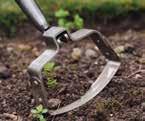
Lift perennials from the ground with a Kent & Stowe Perennial Spade. This handy tool, with its pointed blade, is perfect for cutting through shoots and roots to divide the plant to make more. Make short work of weeds with a Kent & Stowe Oscillating Hoe: this tool has a swivelling head with a stirrup shaped, doubleedged blade to slice any stems and roots below the soil surface.
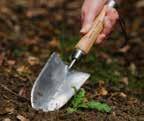
Finally, a tool you’ll never want to be without is a Kent & Stowe Capability
Trowel. It has a serrated blade ideal for opening compost bags and cutting roots, a pointed tip to make short work of compacted soil and, a built-in hammer for knocking in stakes.
up compost
For pots of plants that perform, it’s vital to pick the best compost that does what you need it to do. When planting pots for summer displays, you’ll

need quality compost. Westland Boost All Purpose Compost retains and locks-in moisture which means plants shouldn’t dry out quickly.
Show mature shrubs in containers a bit of love – you can repot or top dress using Westland John Innes No. 3 Mature Plant Compost
Many seeds can be sown in late spring; choose a bespoke compost formulated to ensure the best germination results, such as Westland Seed & Cutting Compost
Once those seedlings have grown, they’ll need potting on – a multi-purpose compost is ideal. These vary, so choose a tried-and-tested blend such as Westland Jack’s Magic.
Now plants are in active growth, begin feeding to power lasting displays through summer.
Westland Boost All Purpose Plant Feed is easy to apply, developed for peat free compost and promises four times as many blooms. Give your plants a brilliant start to life with a controlled release feed; Westland Boost All Purpose MultiAction Granules last around six months.
If you like sumptuous displays of roses, begin feeding plants now with Westland Rose Liquid Plant Food
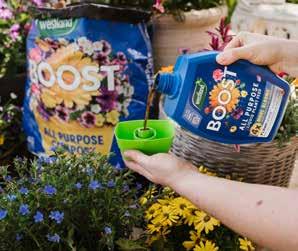
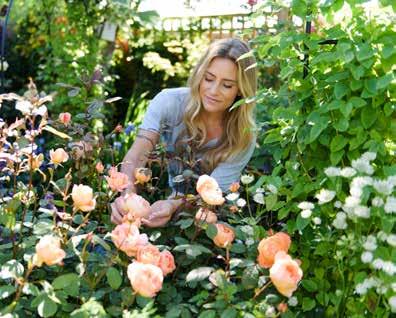
The nation’s favourite... keep your roses blooming
Roses are among the most loved and most versatile of plants – as well as shrubs, some are climbers, while others make good ground cover. Many do well in large containers. Some offer a long flowering season and once established, they can stand some drought; both old-fashioned roses and modern selections are often disease-free.
Spring tidy
Clear weeds or other vegetation from the base of the rose plant – they like to be in sun with plenty of space around them. Remove fallen leaves and pick off any of last year’s foliage that’s still on the plant.
Feed and mulch
Apply a handful of Westland Growmore or Westland Rose Plant Food then mulch with garden compost or Westland Farmyard Manure.
Watch for problems
Keep an eye out for early signs of disease such as blackspot (remove affected foliage by hand) and rub off aphids on developing buds. Keep plants looking great by removing faded flowers and fallen petals. Try Westland Rose 2 in 1 Feed & Protect to support plant’s health from the inside out.
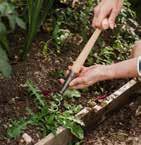
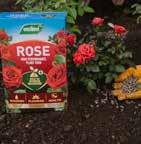
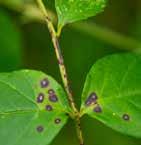

The experts at David Austin Roses, renowned the world over, suggest some of their best roses for your garden
Nothing captures the essence of a British summer quite like a rose in full bloom. With so many types to choose from, selecting the right rose for your garden is a journey of discovery, each variety adding its own charm, colour, and fragrance. Pay attention to your roses as they need plenty of deadheading to encourage more flowerstry Kent & Stowe’s Eversharp Secateurs for a nice, clean cut. Here are some of the best to bring a little romance to your garden.
Olivia Rose Austin 1 and Gabriel Oak 2 : these compact beauties add a soft, classic feel to borders and make wonderful standalone accents. Olivia Rose Austin has lovely, soft pink flowers with a delicate, fruity fragrance that appear as early as May and keep going strong. For a bolder look, Gabriel Oak


adds a splash of colour with rich, deep pink blooms that are as captivating as they are fragrant.
The Albrighton Rambler 3 : ramblers bring a bit of romance to the garden, with their arching stems that make them ideal for covering fences, arches, or pergolas.

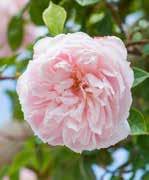
The Albrighton Rambler is a showstopper, blooming in clusters of delicate blush-pink flowers – it has a subtle, sweet scent and a natural, carefree beauty.
The Generous Gardener 4 and Claire Austin 5 : climbing roses bring your garden to new heights, literally! They

“Climbing and rambling roses are particular favourites – their blooms are so spectacular.”
Danny Clarke, aka The Black Gardener, is a TV presenter, garden designer and Director of Grow to Know.

are fantastic for walls, trellises, or any vertical feature. The Generous Gardener is a true gem, with its soft pink petals and a delightful, musk fragrance, creating a warm and welcoming atmosphere. For a touch of brightness, Claire Austin produces beautiful, creamy white blooms with a hint of lemon fragrance, perfect for illuminating shady corners or mixing with other flowers.
I doubt if there’s anyone who can’t identify a rose. This wonderful plant appears in many sizes, shapes and colours, and is very much entrenched in the British psyche –especially since Henry VII declared it our national flower in 1485. In fact, I have fond memories of my dad in the 1960s singing along with Nat King Cole’s “Ramblin’ Rose”, as it emanated from his highly polished teak radiogram.
As a garden designer I relish the opportunity to plant as many roses as possible, always considering fragrance, colour and shape. Decisions also need to be made on whether to grow a bush rose, climbing rose or one for a pot. Remember that roses need well-drained soil, oodles of sunlight, and they thrive in an open situation that has plenty of airflow – being placed where there is warm and stagnant air only encourages pests and disease. Having said that, there are rose varieties such as David Austin’s Rosa Dannahue (named after yours truly), which will thrive in sun and some shade.
Before planting, make sure the hole is deep (twice the size of the root ball) and the soil gently firmed in when backfilled. This will prevent water from sitting and possibly freezing in very cold weather, which may cause the roots to get damaged.
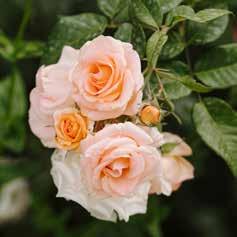
Some people find it tricky to know what to plant next to a rose. Think no further than a foxglove, whose mixture of dark magenta or white spots pick up on many rose colours. The vertical spires will also give contrast to the rounder rose bushes, as do the slender white flowers of statuesque Verbascum chaixii ‘Album’.
Climbing roses are particular favourites of mine –with their spectacular blooms, these plants are proper show-offs! Climbers generally have larger flowers, are less vigorous and repeat bloom, while ramblers are more vigorous and tend to have smaller flowers that may bloom only once. During one of my many walks through the Kent countryside, I’m often stopped in my tracks by the climber ‘Etoile de Hollande’, adorning the side of an old weatherboarded property. The contrast between the white timber cladding and deep crimson rose petals (plus amazing scent) blows my mind. I was suddenly transported back in time to those lovely 1960s memories of the teak radiogram and the Nat King Cole tune “Ramblin’ Rose”...
Having the right tools to hand makes gardening a joy. Our top picks will help gardeners tackle the most common springtime jobs with ease…
1. Turn your soil – use a fork
Careful soil preparation paves the way for successful planting. Turning over beds, borders and veg plots helps to remove troublesome weeds while aerating soil, making it easy to dig in well-rotted manure and organic matter. Kent & Stowe’s Stainless Steel Border Fork is perfect because it features a small, slender head for precise work among plants.
2. Smarten up border edges – use an edging iron
Do your borders look tatty after the ravages of winter? An edging iron will quickly restore clean, crisp edges where grass and weeds are spilling into soil. Kent & Stowe’s Stainless Steel Edging Iron gives borders a manicured appearance and it’s handy for cutting out patches of damaged lawn, too.
3. Plant up beds and borders – use a spade
A good spade can make light work of digging and planting up borders. The new Kent & Stowe Capability
Digging Spade features a 130kg breaking strain, meaning it is unmatched in strength so can handle some seriously tough gardening tasks.
4. Divide plants – use a perennial spade
Spring is the perfect time to divide up perennials and make more plants. The Kent & Stowe Perennial Spade has a pointed head that easily slices through roots and its midi size makes it perfect for working in borders.
5. Get set for planting – use a trowel
Get ready to plant tender bedding and young veg with the Kent & Stowe Capability Trowel its pointed tip is ideal for penetrating soil while this multi-use tool also features a serrated edge for weeding and opening compost bags, as well as a hammer for inserting canes and posts.
6. Remove tough branches – use loppers
Loppers are essential for pruning larger branches that are too large to cut using secateurs. SureCut All Purpose Bypass Loppers are ideal
for cutting through thicker stems such as tough rose branches. Telescopic (extendable) versions such as SureCut All Purpose Extra Power Loppers increase this tool’s versatility.
7. Wave goodbye to thatch – use a scarifying rake
Once lawns have had their first cuts of the season, thatch (dead grass, moss and debris) is often visible. Raking thatch from lawns is called scarification, and a specific Scarifying Rake is best for this job. It will boost air circulation, water absorption and lead to a lush, green appearance.
8. Tidy up shrubs – use secateurs
Breathe new life into tatty shrubs by pruning out dead branches and trimming back wayward growth. The scissor-like action and extra sharp blades of Eversharp All Purpose Bypass Secateurs ensures live, green stems are easily pruned without damage. Tough Eversharp Anvil Secateurs have been engineered to cleanly slice through hard and dead wood.












Lightweight tools take the heavy work out of gardening, without compromising performance, quality or craftsmanship. Many gardeners find lighter tools easier to handle, while they’re invaluable for people with mobility issues or arthritis – and they’re perfect for being precise in small spaces. Kent & Stowe’s Garden Life collection offers the same outstanding quality as their standard tools in a more compact form that’s up to 40% lighter.

Job: breaking up clods, turning soil and aerating.
Our choice: Kent & Stowe
Garden Life Stainless Steel
Digging Fork.
Why we love it: this ultra-lightweight fork offers a perfect blend of comfort and control, helping gardeners who struggle with heavier tools to dig for longer.

Job: digging beds and borders to cultivate soil, boost drainage and get planting.
Our choice: Kent & Stowe
Garden Life Stainless Steel
Digging Spade.
Why we love it: perfect for navigating tight spaces, this compact spade features a larger tread edge for added digging power and comfort.
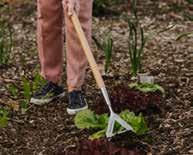
Job: banish weeds from beds and borders with precision. Our choice: Kent & Stowe
Garden Life Stainless Steel Dutch Hoe. Why we love it: ideal for speedy weeding, the push-pull motion removes unwanted invaders without any need to get on your knees to hand weed.
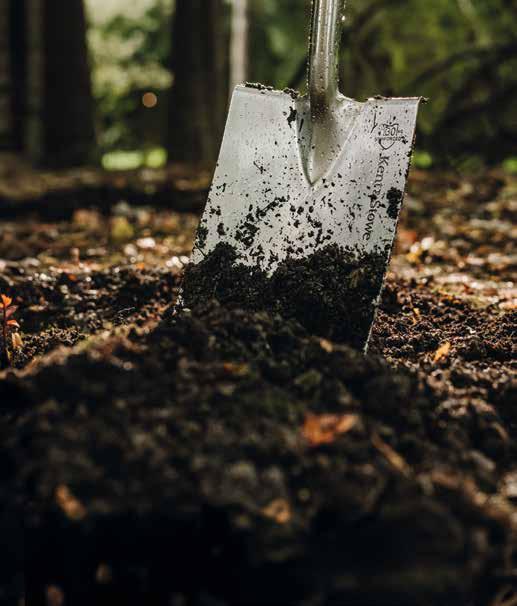
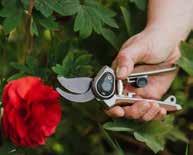
Job: taking cuttings, pruning green wood and dead heading.
Our choice: Kent & Stowe
Garden Life All Purpose Mini Secateurs.
Why we love it: practical, lightweight and easy to handle, these stylish secateurs feature supremely comfortable grip handles, razor sharp blades and a handy string cutter.

Job: preparing seed beds for direct sowing of flowers and vegetables.
Our choice: Kent & Stowe
Garden Life Stainless Steel Soil Rake.
Why we love it: featuring 12 rigid tines, this lightweight and compact tool effortlessly breaks up soil to a fine, level tilth ready for sowing.

www.kentandstowe.com
Houseplants enjoy the warm, sunny days of spring and summer as much as we do; winter can be tough on them with low light levels, draughts and dry, centrally-heated air.
Plants need reviving now if they are to look their best. Check to see if they require repotting: they may be top-heavy or have roots emerging from drainage holes at the base of the pot. Or they may have yellowing foliage with little new growth. All of these are symptoms of exhausted compost.
Choose a warm, sunny day and repot using fresh Westland Houseplant Potting Mix into the next-sized pot. This potting mix incorporates zinc complex to stimulate over 80% more root growth, which reduces stress after repotting, giving you happier, healthier plants.
It’s also a good idea to tidy plants by trimming away old, yellowing or damaged foliage or faded flowers using a pair of clean, sharp secateurs or snips, such as Kent & Stowe Garden Life Snips. When repositioning indoors, move those that like shade away from windows, as sunlight is now strong and may burn foliage.
For lush leaves and colourful blooms through the season ahead, indoor plants need to be fed through the growing season. Choose Westland Houseplant Feed Concentrate, dilute and apply with a Kent & Stowe Indoor Metal Watering Can, or to make feeding even easier, insert a Westland Houseplant Droplet Feeder into the soil of each plant, monthly.
As days warm, pay attention to your plant’s water needs – you’ll need to increase frequency of watering. Push your finger at least an inch into the compost to check if it is too dry, or you can use a Westland Watering Indicator – it will turn red if your plant is

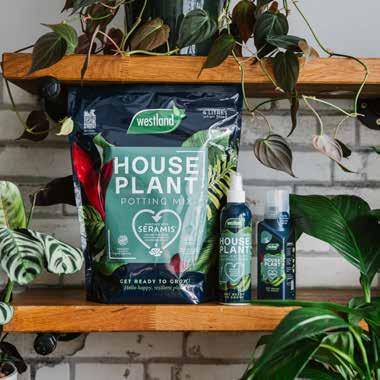
“Warmer days mean you may need to increase how often you water your plants.”
Some
of the very best houseplants for a bright, sunny windowsill


Crown of thorns (Euphorbia millii) This easy-to-grow, spiny succulent with oval leaves usually bears red flowers every day of the year on a sunny windowsill.
thirsty. Boost humidity by standing moisture-loving plants on moist Westland Hydroleca Clay Granules in a plant saucer and regularly mist with Westland Houseplant Mist & Leaf Shine.
This is the time of year to inspect houseplants for pests. Check foliage, especially the undersides of leaves, and remove or wash off any pests before they cause problems. Keeping plants in good health will help guard against future pest attacks.

Fungus gnats (or sciarid flies) are those annoying little flies you see buzzing around houseplants, or on the surface of compost. Although harmless, they are a nuisance, feeding on decaying plant material and breeding in moist compost. Get rid of them by watering your plants from the bottom, letting the compost surface dry out before re-wetting. If problems continue, try repotting in fresh compost specially formulated for houseplants, and add a layer of Westland Hydroleca Clay Granules on top of the compost. You can also place yellow sticky traps among your plants or try growing a carnivorous plant or two to reduce populations of the gnats.
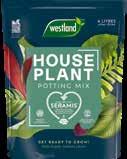


Sago palm (Cycas revoluta) Originating from before the time of the dinosaurs, this slow-growing, palmlike plant forms an impressive rosette of dark green fronds. Calamondin (Citrus x microcarpa) Probably the easiest citrus to grow indoors, this miniature orange bears scented flowers in spring followed by showy, edible fruit.
Use a specialist potting mix that includes bark for good drainage and give Westland’s Orchid Feed a try – it promotes healthy growth and robust foliage. Revitalise your orchids with an orchid mist that creates the ideal climate for healthy leaf growth.

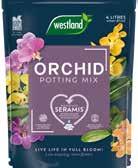


“Create little ‘still lives’ with plants by clustering a few together.”
Abigail Ahern is an interior designer, author of five books and television presenter @abigailahern
SEE MORE ONLINE...
Plants add an enormous amount of structure and texture to your pad. I love to add trailing foliage to kitchen shelves or style them in abundance in the bathroom to add a spa-like vibe.
Colour and movement is super important when choosing plants. They not only add a calm, tranquil aesthetic, they create magic with their verdant hues and captivating forms. I tend to treat and style plants in the same way you would any other accessory: think about their shape, colour, texture and above all play about with size and scale.
Create little ‘still lives’ with plants by clustering a few together (succulents look super sweet when paired together). This is a go-to trick I use for every vignette or gathering I create for my interior curations. When you group things as opposed to leaving gaps, your eye takes in the whole and the effect is really impactful. You can add a cluster of potted plants to your bedroom for a look that’s calm and harmonious, or make your hallway a little more

Propagating houseplants is a great way to get to know how plants grow, and to multiply them for friends and family. You can propagate houseplants at any time of the year, but now is the best time as most enter their active growing phase. Longer daylight hours and warmer temperatures will help stimulate vigorous growth, root development and overall support for new plants. The only thing to watch out for is that if temperatures get really warm, new plants can be distressed, wilt and even die – so keep an eye on them!
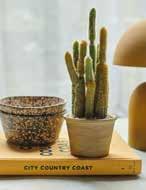
welcoming with a zingy pop of green. I like to add even more texture and interest by popping potted plants into baskets or rustic clay pots – these provide a great contrast to the leaf shapes and colours.
One of my other go-to tricks is to think of a room like a skyline, with differing heights so that your eye doesn’t instantly ‘read’ the room. By adding large-scale plants on the floor or a side table – or popping a few on a high bookshelf – you’ll instantly draw the eye up and add a big dose of interest and intrigue to your living space. Plants are a design element in their own right as they can break up any harsh lines and add a softness that instantly calms and connects us to nature.
As part of my homeware collection I have faux plants –they may not be for everyone, but if you have a room with very low light levels and want the visual benefits and style that plants bring to a home, they can be a great alternative.
Division: suitable for some plants (such as snake plant, Dracaena), gently pull the plant into sections (possibly two or three) and then pot these on.
Offsets: where mini plants (known as pups) are growing at the end of leaves (such as spider plants, Chlorophytum), cut them off, clean them, let them dry in a room for 48 hours, and then pot them on.
There are three main ways to propagate houseplants: Stem cuttings: take your healthy stem cutting (such as a Swiss cheese plant, Monstera), dip in Westland Organic Rooting Gel, pop it into water, wait for some roots to develop and then, when it has enough roots, pot it up.
For a full guide to houseplant propagation, and a helpful video showing you how, visit: gardenhealth.com/houseplant-hub
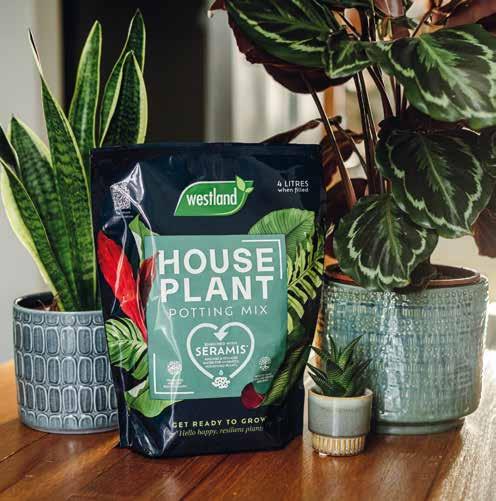
Even if you only have a small amount of space, there’s plenty of fruit and veg you can grow. Containers, hanging baskets and raised beds will all yield in abundance
Small garden? No problem! Pots, window boxes, hanging baskets and raised beds hold the key to bountiful harvests of fruit and veg throughout summer. Many modern edibles have been bred to remain compact while cropping profusely, so it’s easy to create a mini-allotment outside your door with a range of delicious, fresh produce.
Fruit and veg in pots and baskets need a sunny, sheltered spot to thrive. As long as plants are kept watered and fed throughout the growing season, you’ll be harvesting until autumn – and cutting the cost of your weekly food shop!

Wire baskets should be lined using sustainably-harvested moss or a pre-formed liner, with a deeprimmed saucer at the base to act as a water reservoir for thirsty edibles (it’ll help to prevent wasteful water run-off, too). Fill with Westland Boost All Purpose Compost.
Bush tomatoes (also called determinate tomatoes) are brilliant in hanging baskets. These compact types often tumble over the edges, laden with masses of sweet, bite-size fruits.
Strawberries are ideal for hanging baskets too. Young plants settled into baskets in spring will yield deliciously sweet berries by midsummer – the cheerful white flowers and red fruits look a treat cascading over the sides. Growing in baskets keeps slugs away from fruits, too.
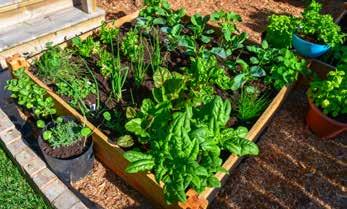
Growing fruit and veg in containers
Your choice of container can help to keep an edible’s thirst quenched. To conserve water, use glazed, plastic or rubber containers. Large pots offer more space for root development, leading to bigger harvests.
Quality compost is essential for bumper harvests in pots. Fill containers with Westland Raised Bed & Vegetable Soil for the best results. This blend features an organic nutrient mix, making it ideal for edibles and crops, as well as a structure that promotes root development.

A hanging basket of herbs in a sunny spot can keep your kitchen supplied with chives, parsley, basil, oregano and more.
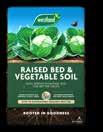
You don’t need a veg plot to enjoy tasty, home-grown spuds! A few seed potatoes planted into a Grow It Jute Potato Planter Bag will pave the way for a decent crop on patios and balconies. Natural and reusable, there’s even a flap at the front for easy access when harvesting.
Old rose pots, and deep window boxes, are ideal for quick crops of delicious carrots.
Slugs and snails are the kitchen gardener’s biggest foe. From emerging seedlings to young growth, the start of the new season creates a banquet for munching molluscs.
Slugs and snails love warm, wet weather, often feeding at night. Take action now to protect crops from damage – venturing out at night with a torch to hand-pick snails from plants can really help to reduce numbers.
Barriers of gravel or crushed shells can thwart molluscs’ efforts to reach
vulnerable edibles, or try Growing Success Organic Slug Stop Barrier Pellets. Growing Success Slug & Snail Traps are another chemical-free way to protect plants: set traps into the ground, fill with beer and add two teaspoonfuls of salt. A single trap can help protect a 1.5 metre radius, capturing up to 50 slugs and snails.
Certified by Organic Farmers & Growers (OF&G), Growing Success Slug Killer Advanced can be deployed as a fast-acting control.
Made from ferric phosphate (which is a naturally occurring ingredient) it is effective after rain.
Gardeners can also fit Growing Success Slug Copper Tape around pots. The tape emits a mild electric charge, sending molluscs into retreat. Mulching with wellrotted manure or garden compost can also help to deter slugs and snails.



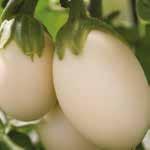



Ornamental, productive and a doddle to build, raised beds make gardening a joy all year round
Raised beds make a beautiful addition to any garden and they’re easy to put together, even if DIY isn’t your forte. They help soil to warm up quickly in spring, getting the growing season off to an early start. They’re ideal for growing flowers, fruit and veg, with less bending down to plant, weed and harvest.
Where garden soil is heavy and prone to waterlogging – or so light
it struggles to retain moisture and nutrients – raised beds can offer optimum growing conditions. You can tailor soil to plants’ requirements, growing acid-lovers such as blueberries in ericaceous compost, for example, even if your garden soil is neutral or alkaline. Raised beds are perfect for crop rotation, too, preventing harmful build-ups of soilborne pests and diseases.
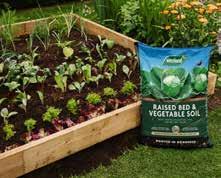
1 Choose a sunny, sheltered area away from shade-casting trees. Low beds should be 25–30cm high, with taller ones standing 40–50cm above the ground. Several small beds are easier to maintain than a large one.
2 Measure the size of your raised beds and cut pressure-treated wood or decking timber to the correct lengths. Raised beds can be created using robust wooden sleepers. You can also purchase
pre-made 1m² wooden raised beds from Westland’s Grow It range.
3
Raised beds should be built on open soil so they drain freely. Clear the area of weeds and grass, then use string suspended between canes to mark the outline of the bed. Ensure the ground is level.
4 Set pressure-treated timbers in place and position them using a spirit level. Use a drill to make pilot holes before screwing timbers together with long decking screws.
5 Position wooden batons in each corner and secure to timbers using screws.
6 Begin with a layer of bark chips, then add up to 10cm layer of Westland Farmyard Manure and finally fill up the bed with Westland Raised Bed & Vegetable Soil.


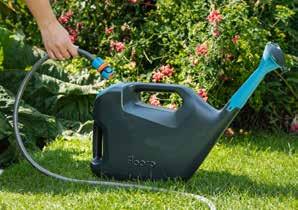
Gardeners who water and feed crops regularly will be rewarded with the biggest harvests of homegrown produce. Adding a sprinkling of Westland Water Saving Gel before planting improves the compost’s capacity to retain water. This genius gel holds up to 400 times its own weight in water, gradually releasing it to roots and preventing plants from wilting.
With limited space to develop extensive root networks, edibles in pots and hanging baskets need a lot of water in summer. If the weather’s scorching, water first thing in the morning and again just before dusk –so less water will be lost to evaporation.

The Flopro Quick Fill & Flo Watering Can has been engineered for plant feeding and can be filled from anywhere in your garden. You can attach the watering can directly to a hose pipe connector for easy, no mess filling, while the flip-top rose can be quickly opened to form a fast-pouring spout. Pour your Westland Big Tom Super Tomato Food directly into your watering can to ensure your crops get all the nutrients they need to thrive.
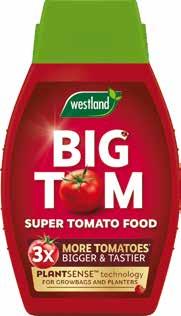


Containing a unique blend of 12 different seeds, as well as vitaminenriched pellets, Peckish Complete Seed Mix is the perfect feed for your wild garden birds. It provides complete nourishment and keeps them healthy and happy
Supplied in plastic free, paper packaging, this mix is designed to be 100% edible and perfect for hanging feeders – the seeds have their husks removed to help minimise waste and mess.
Some of the key ingredients in Peckish Complete Seed Mix include:
• CalVita® pellets
CalVita® is a supplement unique to Peckish that provides vitamins and minerals essential to the development and well-being of wild birds.
• Kibbled maize
This tasty, easily-digested source
of energy is carbohydrate-rich and a perfect food in winter and the breeding season.
• Sunflower hearts
These bird favourites are high in both protein and calories, providing vital nutrition and attracting a wide range of species.
• White millet
This is a tiny round seed enjoyed by smaller birds such as finches and sparrows; it is soft, nutritious and easily digested.
• Naked oats
High energy and high fat, this is rich in essential minerals and

proteins that help maintain bird health.
• Safflower seeds
Packed full of protein, these seeds are especially important during moulting season to help birds grow new feathers.
• Oyster shell pieces
Helps birds to produce strong egg shells, and aids with bone development and digestion.
• Pinhead oatmeal
A smaller grain, ideal for the smaller beaks of smaller birds, or for fledglings.
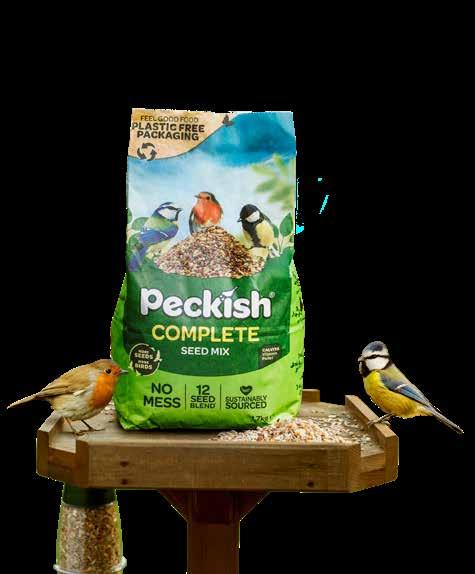
Who doesn’t love to see wildlife in their garden? With a few simple steps, and the right food selection, you can support a whole host of visitors

1 Watch for orange tip butterflies. They are one of the first butterflies to emerge and among the most recognisable of early butterflies (although females have black-tipped wings), found in meadows, woodland and gardens, often flitting around hedges. Females lay orange eggs on cuckoo flowers (Cardamine pratensis) and garlic mustard (Alliaria petiolata).

2 If you have a pond, look for newts during April as couples court and spawn, with females laying eggs on leaves of pond plants. A great way to spot them is at night when they are most active by shining a torch onto the water. Attract newts by including plenty of pond plants and provide sheltered, damp places around the margins for when they emerge.

3 Many bats become more active in May; they spend warmer evenings on the wing, feeding on insects, with females looking for sites to raise their young (which are normally born in June). You can encourage bats to visit your garden by planting insect-attracting plants such as honeysuckle, and if you keep garden lighting to a minimum you might even catch a glimpse of them too.

4
Hedgehogs are in peak breeding season in May; watch and listen for males as they try to impress females by making remarkably loud snorting sounds. Encourage hedgehogs by providing fresh water and special hedgehog food such as Gardman Hedgehog Bites.

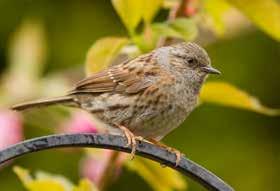
Many people get huge joy from feeding garden birds. It’s a wholesome family pastime that, if encouraged at an early age, may lead to a lifelong interest in birds and spark a greater appreciation for wildlife. And it’s more than a way to pass time in the school holidays; feeding birds can lower stress levels and anxiety, encouraging more time in the great outdoors. Although birds attracted to your garden will enjoy food you provide, many also feast on garden pests; goldfinches and sparrows pick aphids from roses and lupins, blackbirds and song thrushes devour snails. Some even reduce weeding, with sparrows and finches among others devouring weed seeds before they germinate.
With wild bird populations under increasing pressure through habitat loss and extreme weather, gardens provide safe refuges for many, while providing food can help boost numbers.
We love seeing lots of different birds visit our gardens, and with 600 different bird species found flying around our nation, there are lots to choose from when it comes to our favourite. These three commonly rank at the top of people’s lists, and for good reason. Not only are they fairly common, so you don’t have to wait too long to spot them, but there are lots of interesting and unique facts about each species
Robin
Your favourite red breasted friend, robins can be spotted all year round.
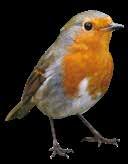
Average height: 14cm
Average wingspan: 21cm
Fun fact: Although robins may look the same, each rwobin has a completely unique red breast pattern!
Favourite food: Mealworms

Wren
Although small in size, they can often be heard thanks to their loud call.
Average height: 10cm
Average wingspan: 15cm
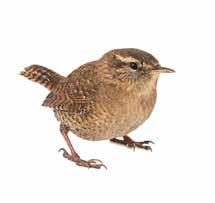
Fun fact: More than 60 wrens were once found snuggled up together in a single nest box to keep warm!
Favourite food: Sunflower hearts
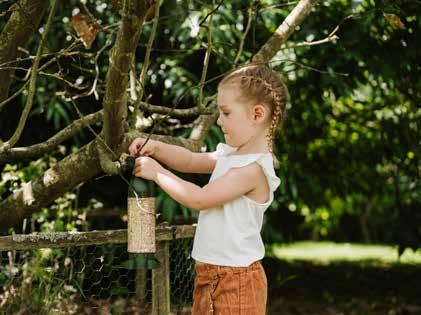
Goldfinch
With distinctive colourful markings, goldfinches can often be found flocking in groups of up to 100.


Average height: 12cm
Average wingspan: 24cm
Fun fact: The collective noun for a group of goldfinches is a ‘charm’, and charming they very much are.
Favourite food: Nyjer seeds


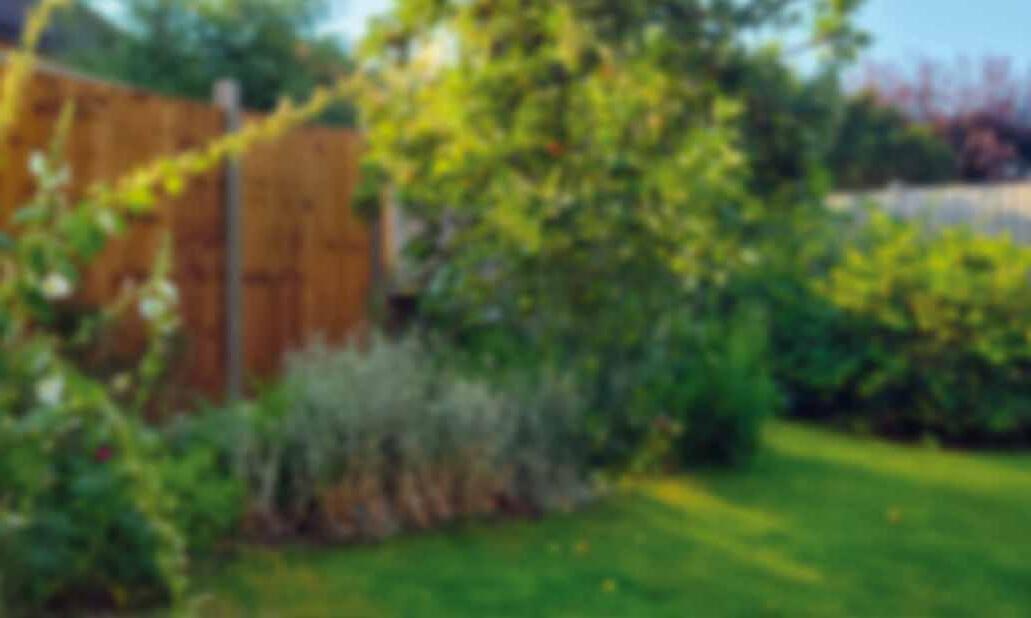
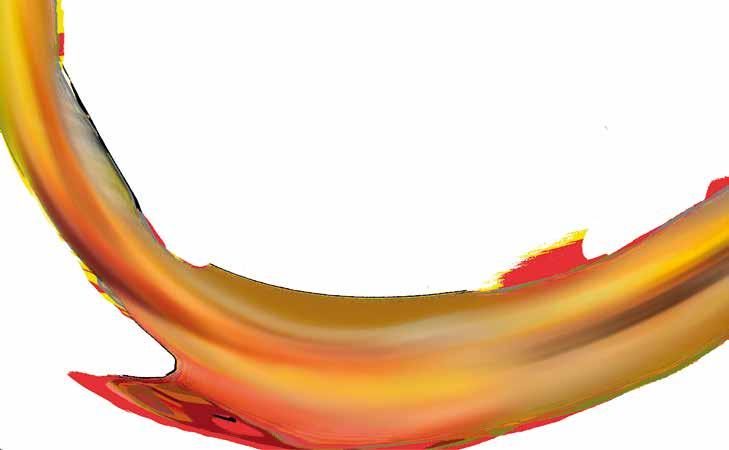
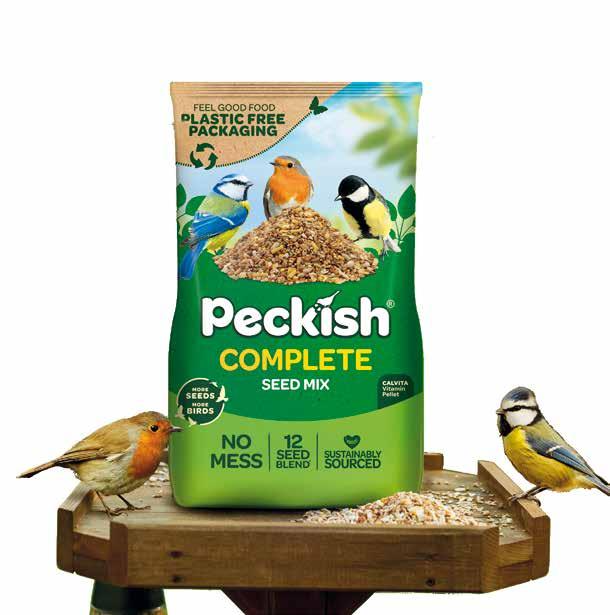

device used to gently
a lawn (9)
Houseplant that stores water in its leaves (9) 8 Glass structure for your garden (10)
‘Like two ____ in a pod’ (4)
Lives for two years (8)
Common tuberous flower with large, showy blooms (6)
Tiny, sap-sucking pest (5)
pipe used for watering (4)
faded blooms (11)
move young plants (10)
____ & Stowe (4)
‘Kiss from a ____’ (4)
Tool used for weeding and cultivating (3)
6 Designing and cultivating a garden, such as adding a patio, or borders (11)
7 Hand tool used for planting and digging (6)
9 Perennial with large leaves, loved by slugs (5)
10 The leaves of a plant or tree (7)
13 The act of making a hole (7) 15 Popular houseplant with patterned leaves (8)
Gardening method, avoiding chemicals (7)
Tulips, daffodils, crocus (5)
Popular autumn garden tool for collecting leaves (4) 24 A type of citrus tree (5)

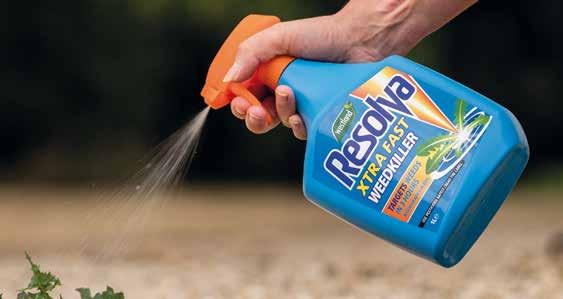


Aeration
Biennials
Blossoms
Boost
Compost
Daffodil
Feeding
Flourish
Garden
Greenhouse
Leeks
Nesting
Pollination
Primrose
Robin
Secateurs
Trowel
Unwins
Weeding
The best of new gardening books from DK.com and all good garden centres

How to Design a Garden
Design the garden of your dreams with the expertise of award-winning garden designer Pollyanna Wilkinson. Learn how to untap your garden’s potential and customise the design to suit you and your space –whether that be an extension of your living space for parties and al fresco dining, or a calming oasis to relax in. £22

The Permaculture Garden
Bestselling author Huw Richards delves into the fascinating world of nature-inspired design. Full of practical ideas and advice that will transform your approach to growing, this ultimate guide to permaculture gardening contains planting plans, guides and everything you need to know to create a beautiful, productive, and edible paradise. £25
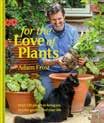
For the Love of Plants
Take a wander through Gardeners’ World presenter and RHS Chelsea Flower Show award-winner Adam Frost’s plant-filled garden. In this latest book, he reflects on the plants and flowers that have shaped his life whilst offering insight into the music that’s inspired him too – and the design choices that helped create the perfect garden for him and his family. £22

The Greenhouse Book
The ultimate year-round guide to getting the most from your greenhouse. Gardener Tom Brown explains about initial planning considerations and ongoing maintenance, as well as all the exciting and unusual plants that can be grown. This really is the comprehensive guide to growing under glass. £20

Grow Your Groceries
Have you ever wondered if you could grow plants from the food you buy? Instagram and TikTok hit Simon Akeroyd (@simonakeroydgardenwriter) shares his top 40 hacks to grow plants from your supermarket shop – from avocados to lemongrass, strawberries to lychee. It really is that simple! £16.99
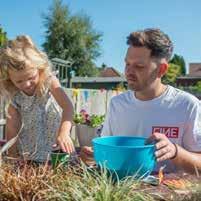
“The garden is a magical space where both plants and relationships can grow.”
As we kick off a fresh new year of gardening, there’s no better way to connect with your children than by stepping outside and getting into the garden together. In a world where screens are often the centre of attention, gardening offers a perfect opportunity to unplug, get your hands dirty, and enjoy the great outdoors as a family.
Being outside, growing together, and designing and building your space as a family far outweighs any games console or movie night. Whether you’re planting seeds, pulling weeds, or walking amongst the leaves, gardening teaches children valuable lessons about patience, responsibility, and caring for life. Plus, from my own experience as a father, it’s a fantastic way to bond with your children as you share the excitement of discovering that your carrots have finally sprouted!
So, what can you and the kids get up to in the garden this year? Here are three fun, easy gardening projects:
1. DIY seed bombs: roll up your sleeves and create seed bombs using a mix of wildflower seeds, compost, and clay. Once dried, throw them around your garden or local green space to watch beautiful flowers pop up in unexpected places.
2. Bug hotels: build a bug hotel using bits of wood, old bricks, and even pine cones. Not only is this a creative
activity, but it also gives a home to the insects that help your garden grow!
3. Mini veggie patch: set up a small, raised bed or container garden for the kids. Let them grow what they love to eat! It’s a great way to introduce them to where their food comes from and get them excited about healthy eating. Beyond the plants, gardens provide endless opportunities for learning. Children can explore the life cycle of plants and understand how insects and animals play their part in the ecosystem. But the benefits don’t stop there, as gardening encourages creativity – for children to really go wild and get messy. This is one of the reasons I push so hard for horticulture to be on the national curriculum, as you really can learn so much.
So, why not make this year, the year you and your children reconnect with nature? The garden is a magical space where both plants and relationships can grow, and the memories you create together will last long after the flowers have faded.
READ MORE ONLINE...
Scan the QR code to read more from Lee and understand about the value of gardening with children.
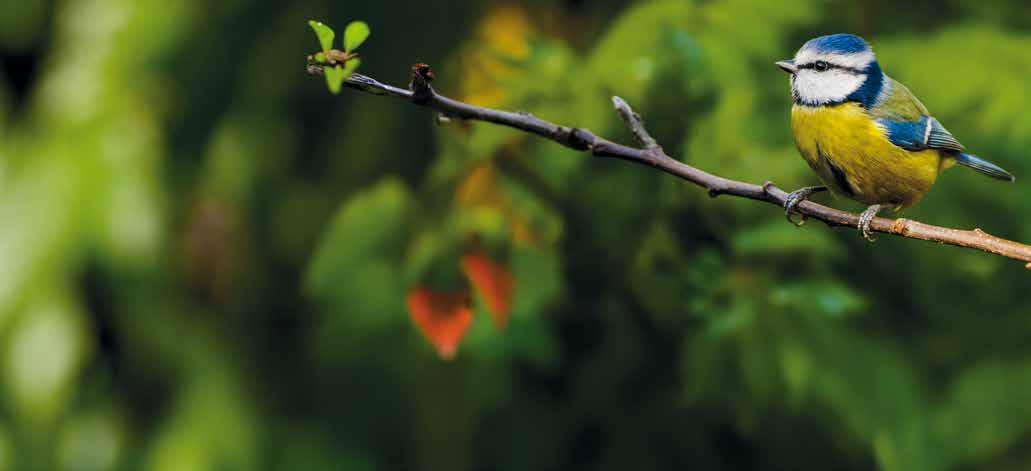
Gardman is the gardener’s No. 1 choice for quality traditional wild bird seed blends. With a comprehensive range of high energy suet products, as well as quality feeders and hardware, Gardman offers everything you need to make your garden a haven for wild birds.
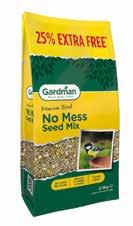
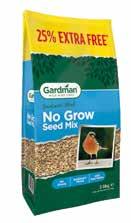



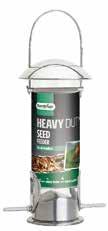

Grow it to eat it, bloom it to gaze at it, lie back and love it, or jump for joy on it. One thing’s for sure you’ll be proud of it, so give it your best with Westland .
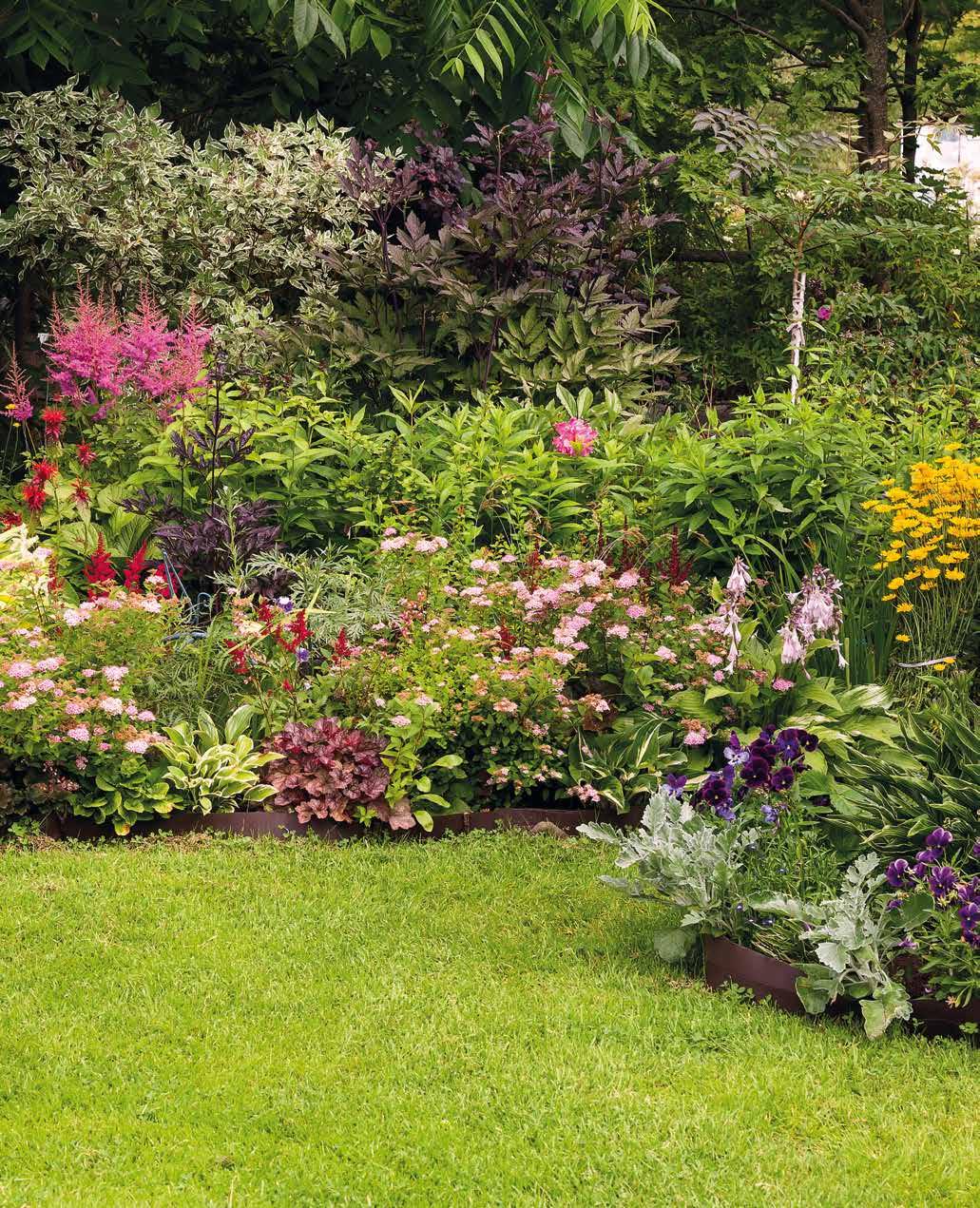

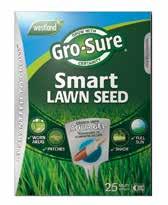

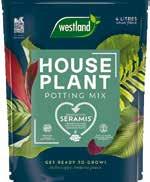

Scanmefor inspirationfor yourlittlecorner oftheearth